The document discusses the pervasive issue of plastic waste and highlights innovative solutions like plastic pavements made from plastic and sand to mitigate environmental impact. It provides an overview of different types of plastics, their properties, and applications, while emphasizing the statistics and challenges associated with plastic production and recycling. Additionally, it outlines the advantages and limitations of plastic as a material in construction and other industries.
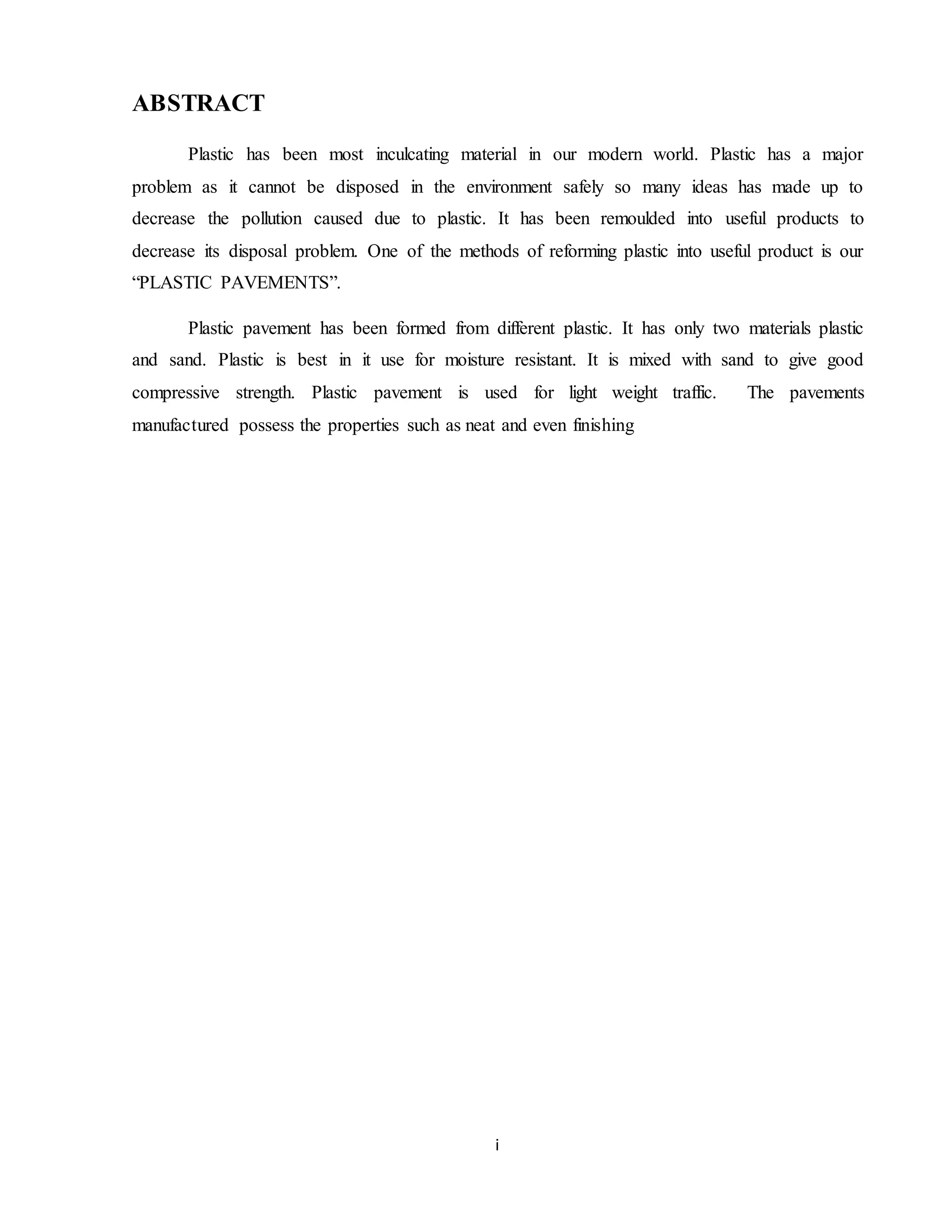
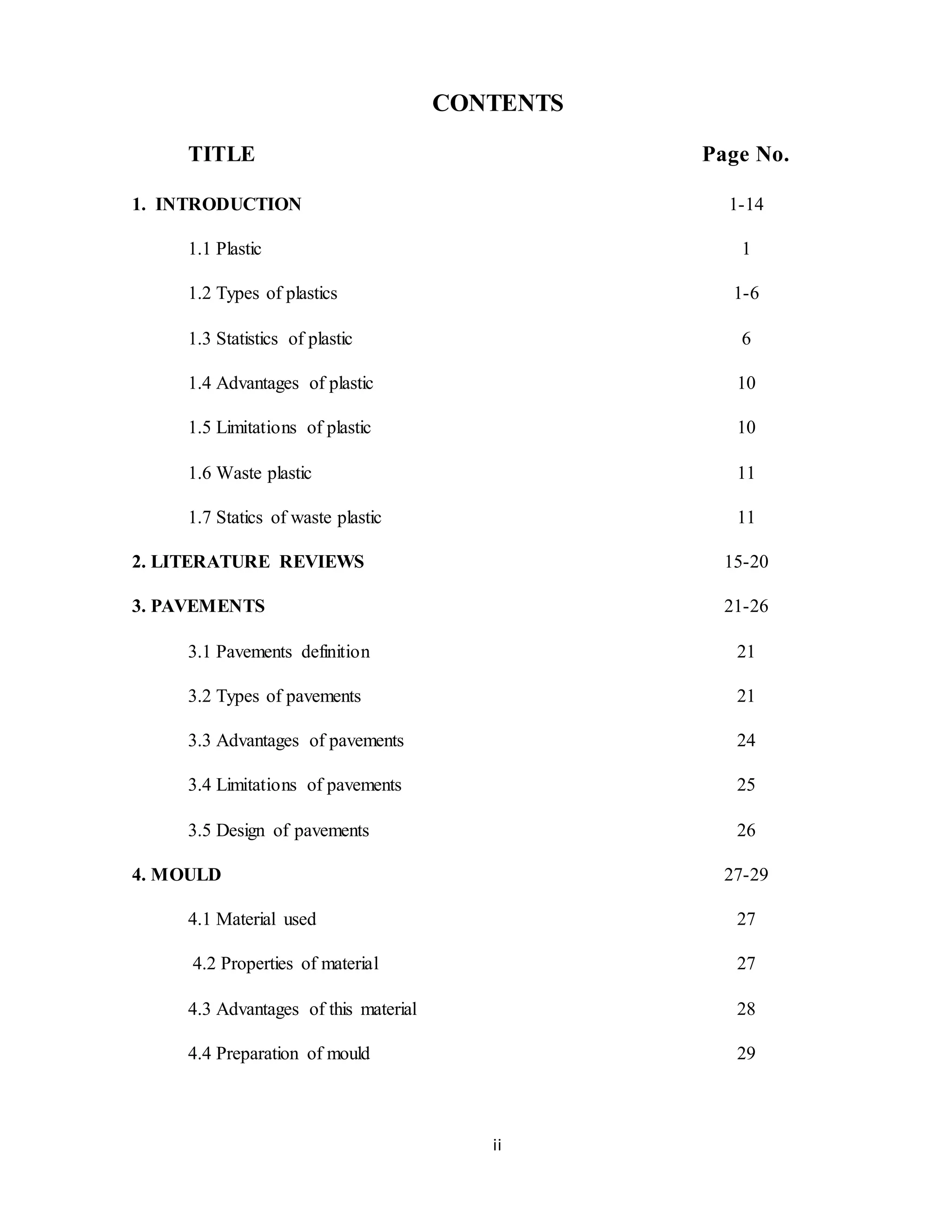
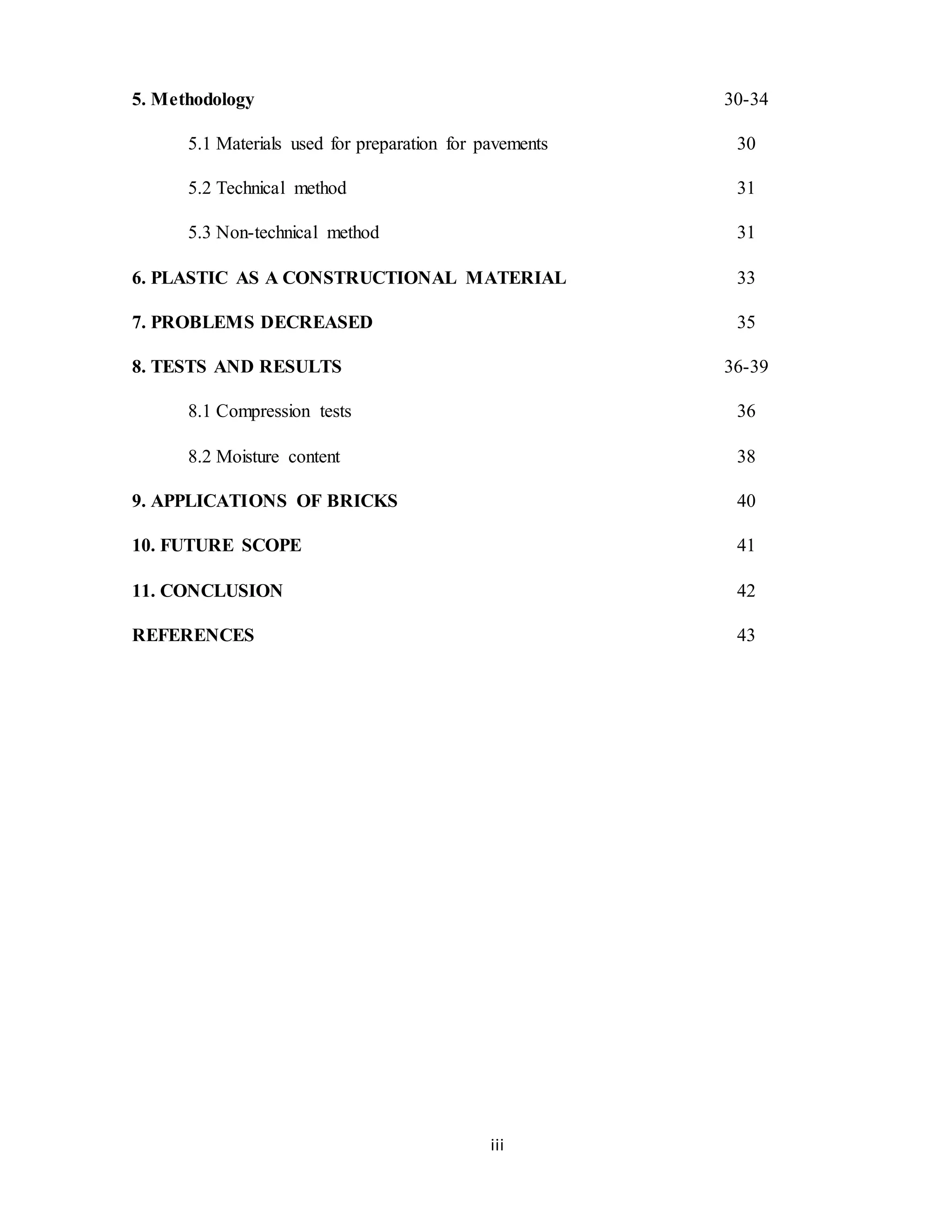
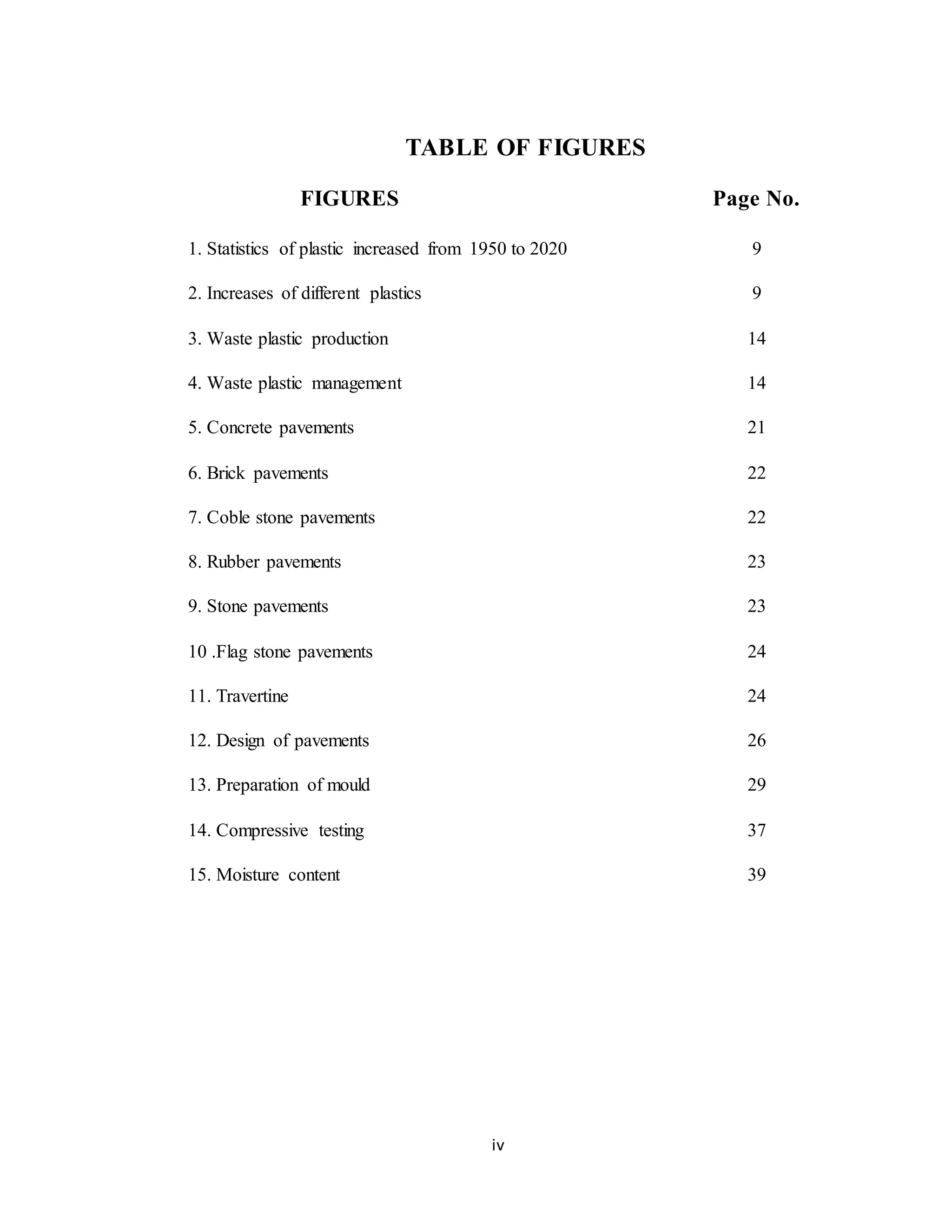
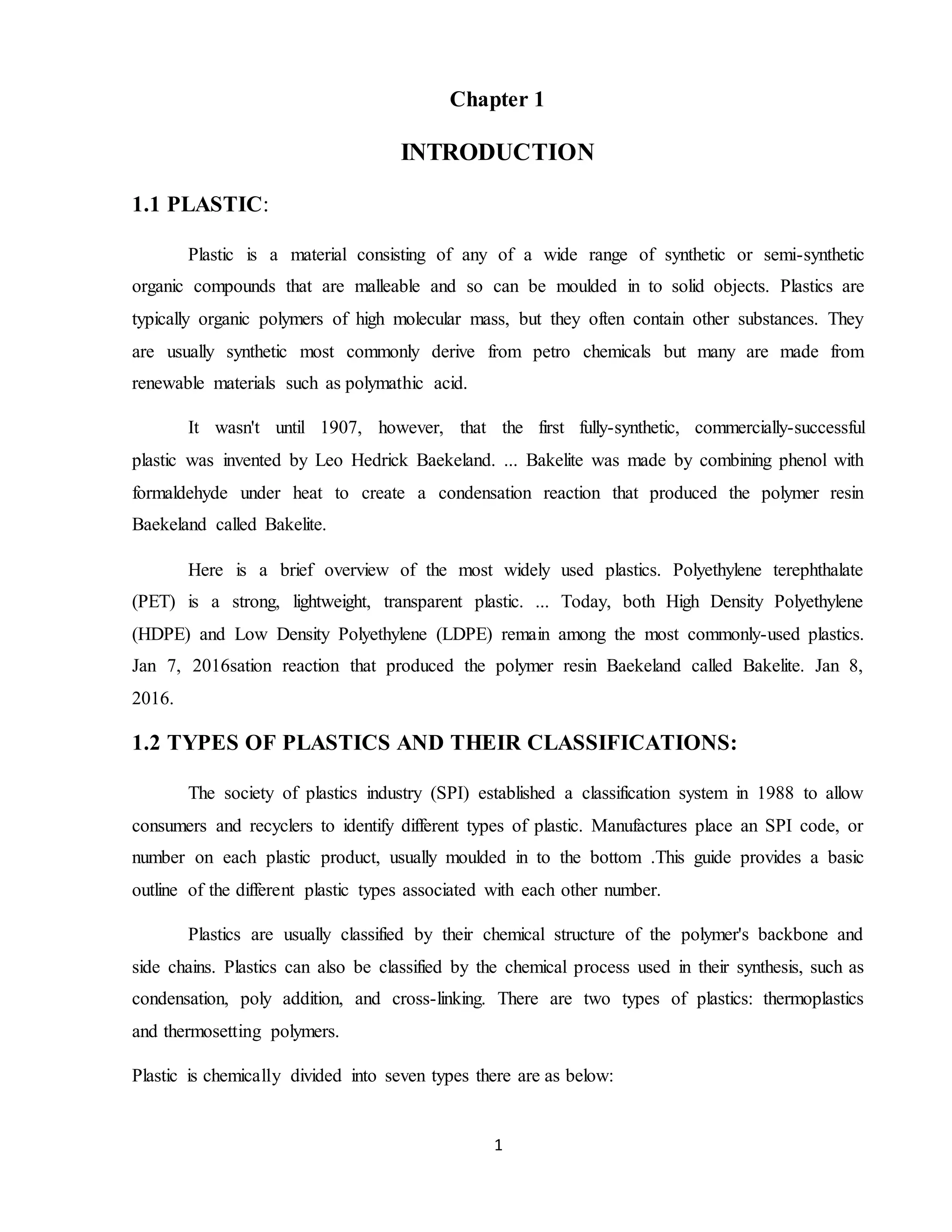


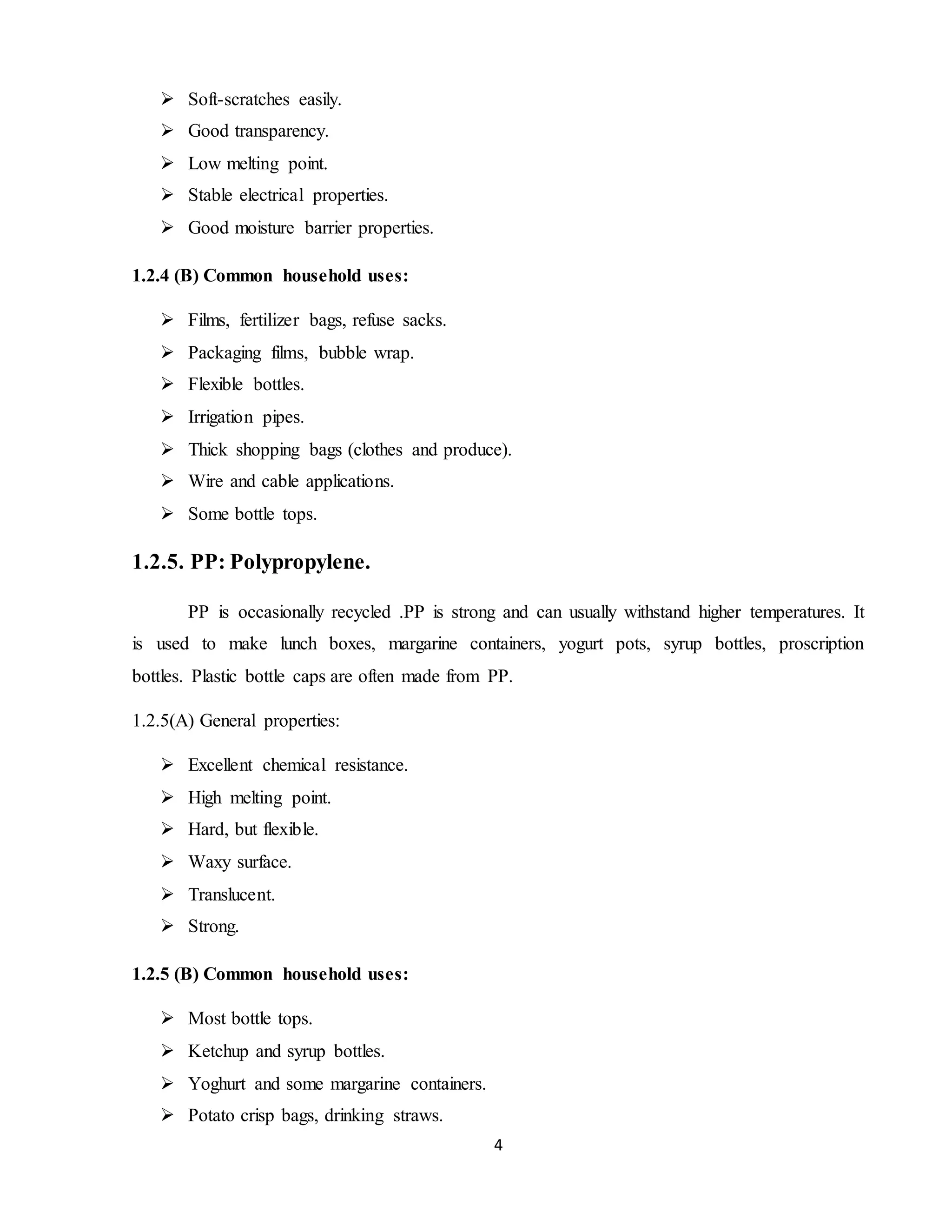
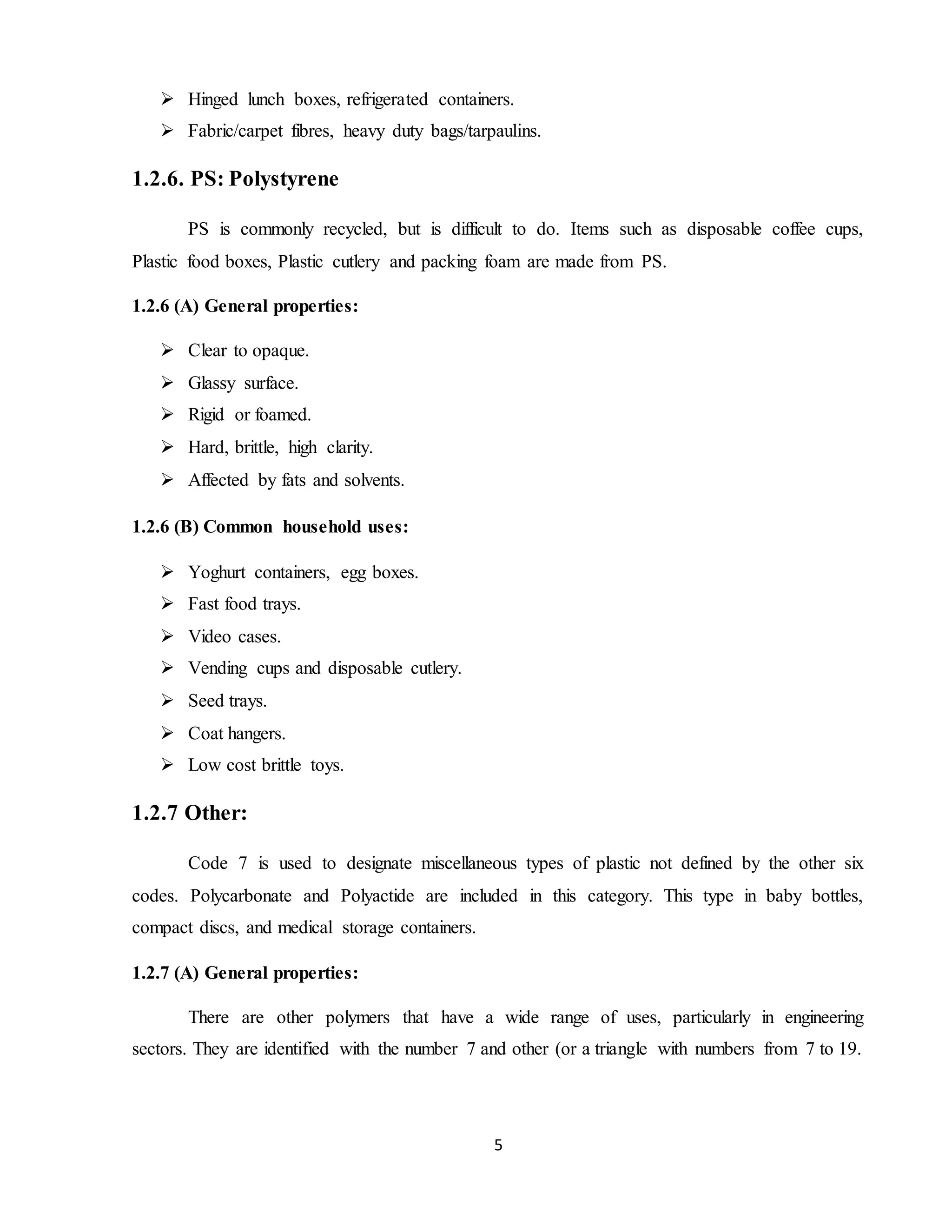

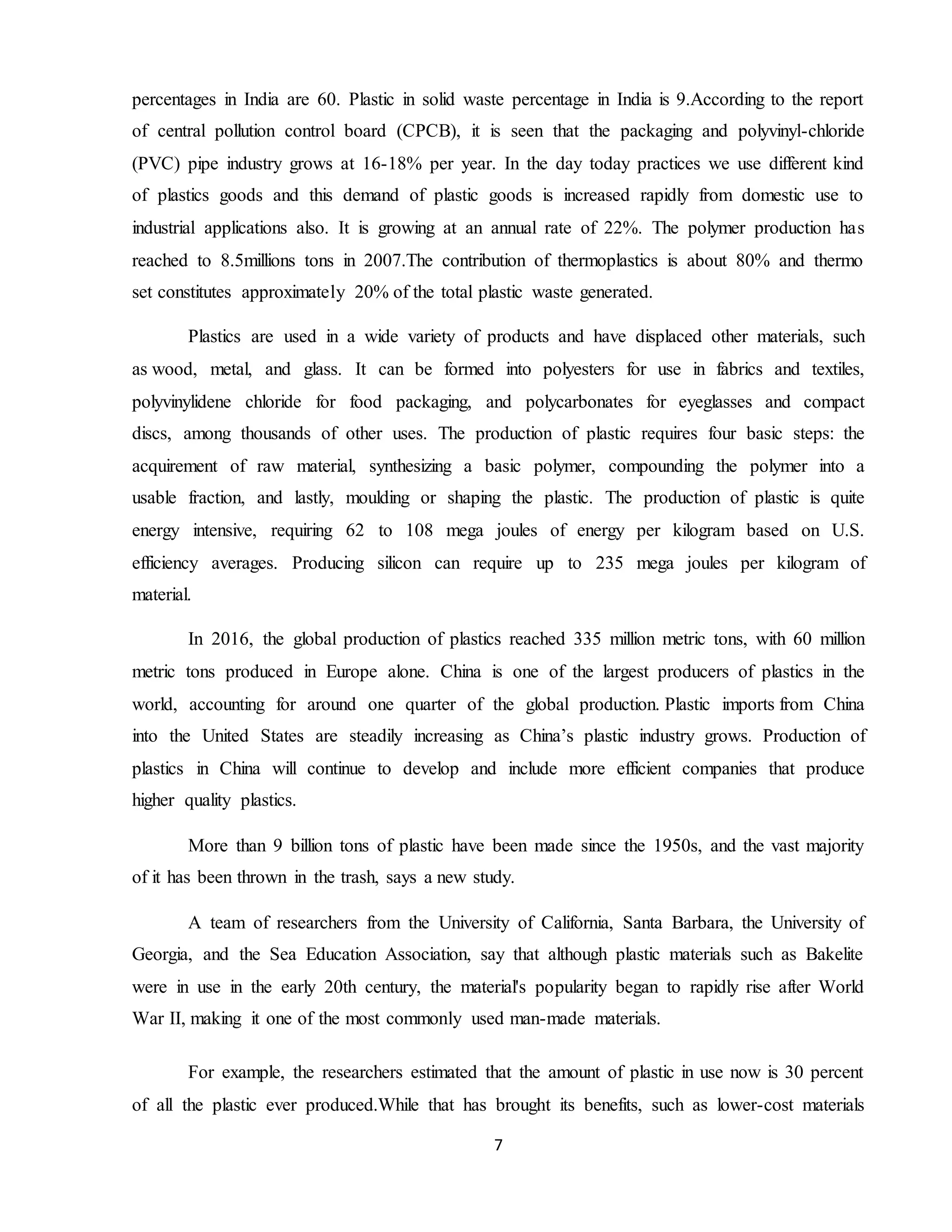
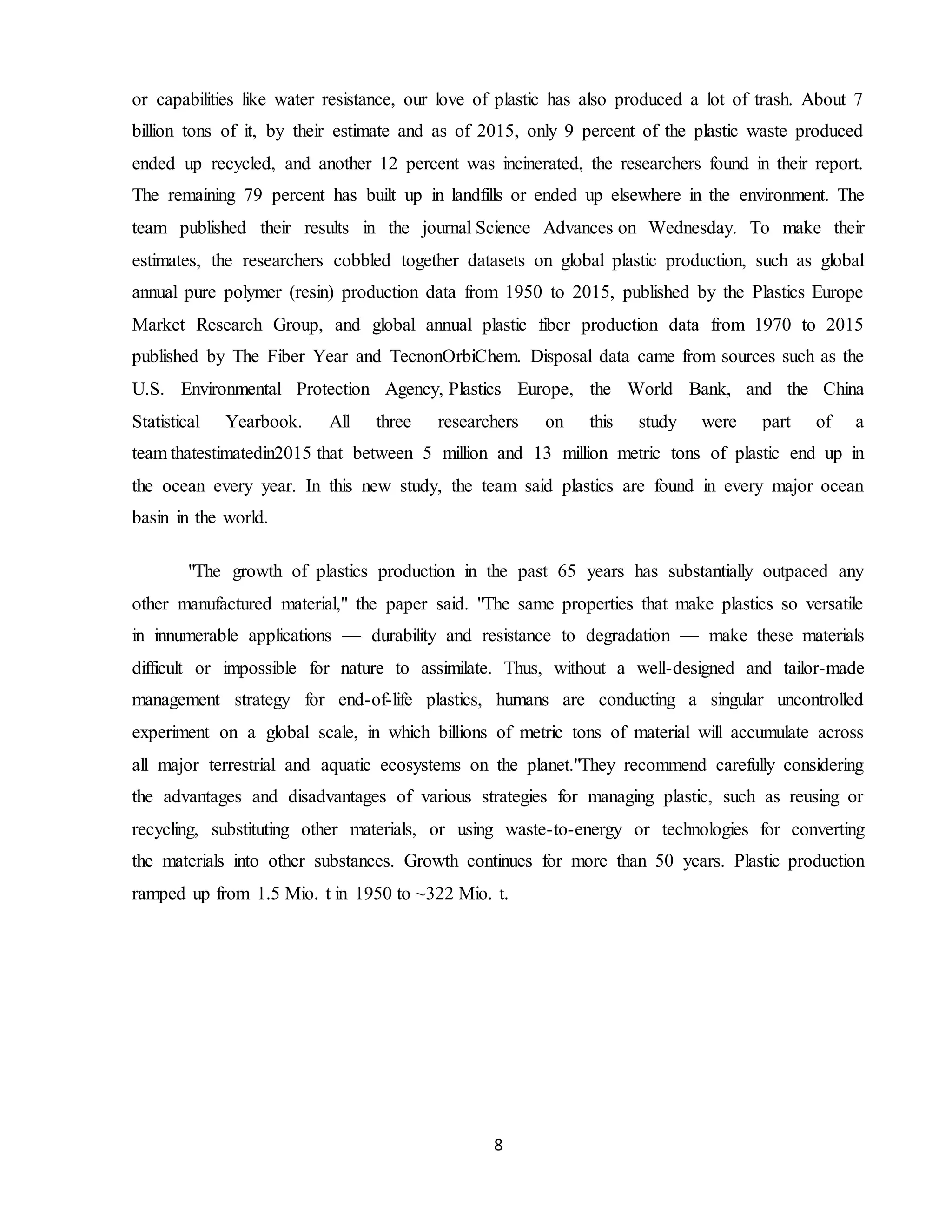
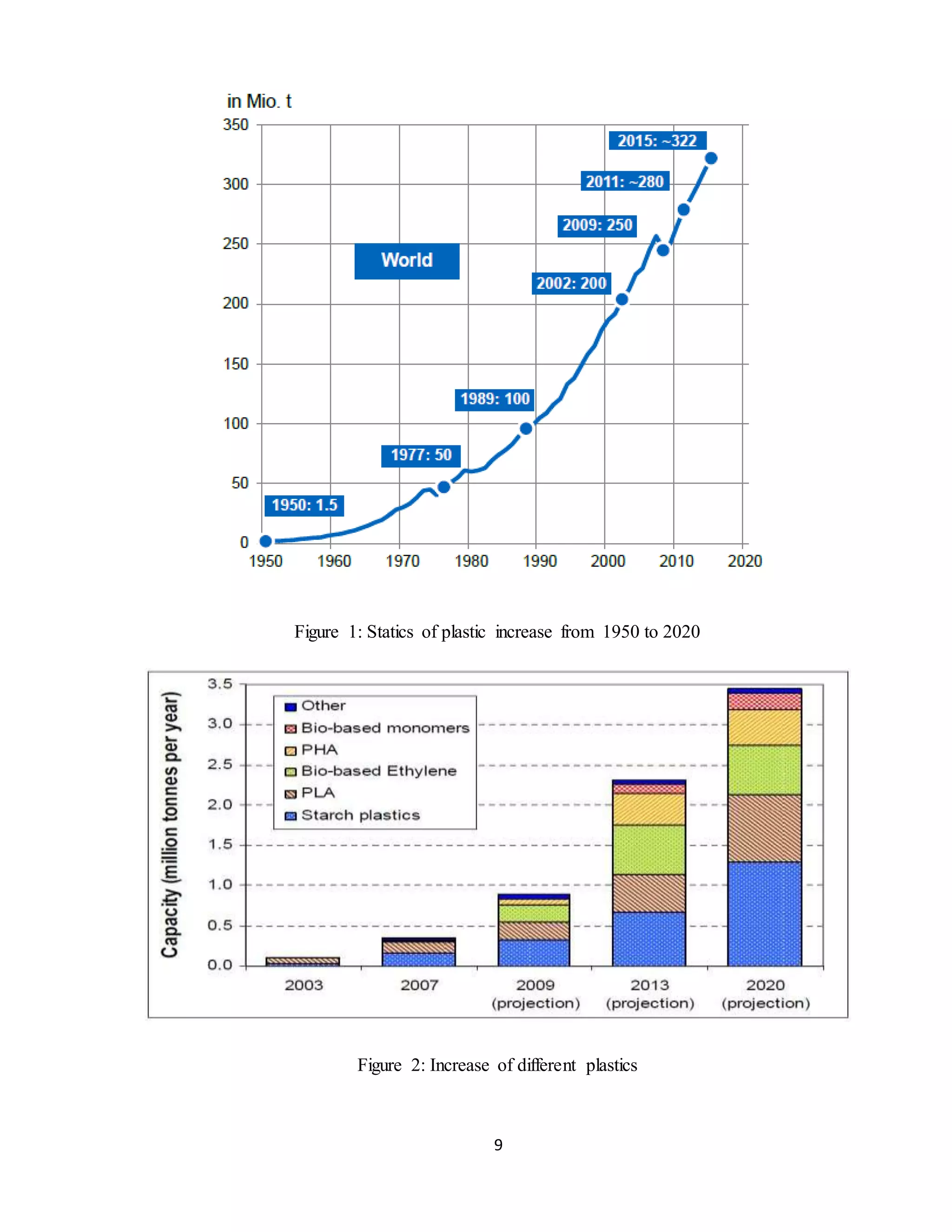

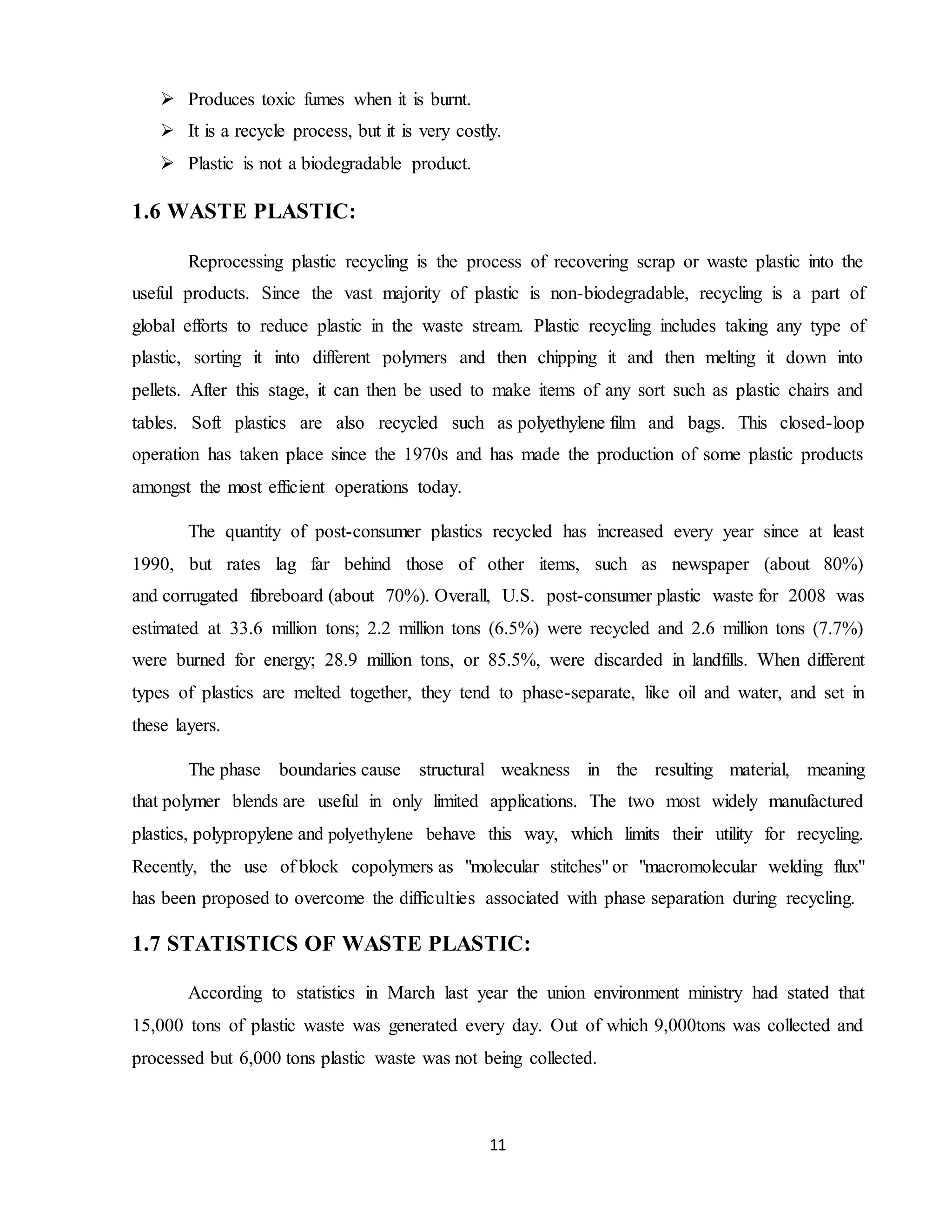
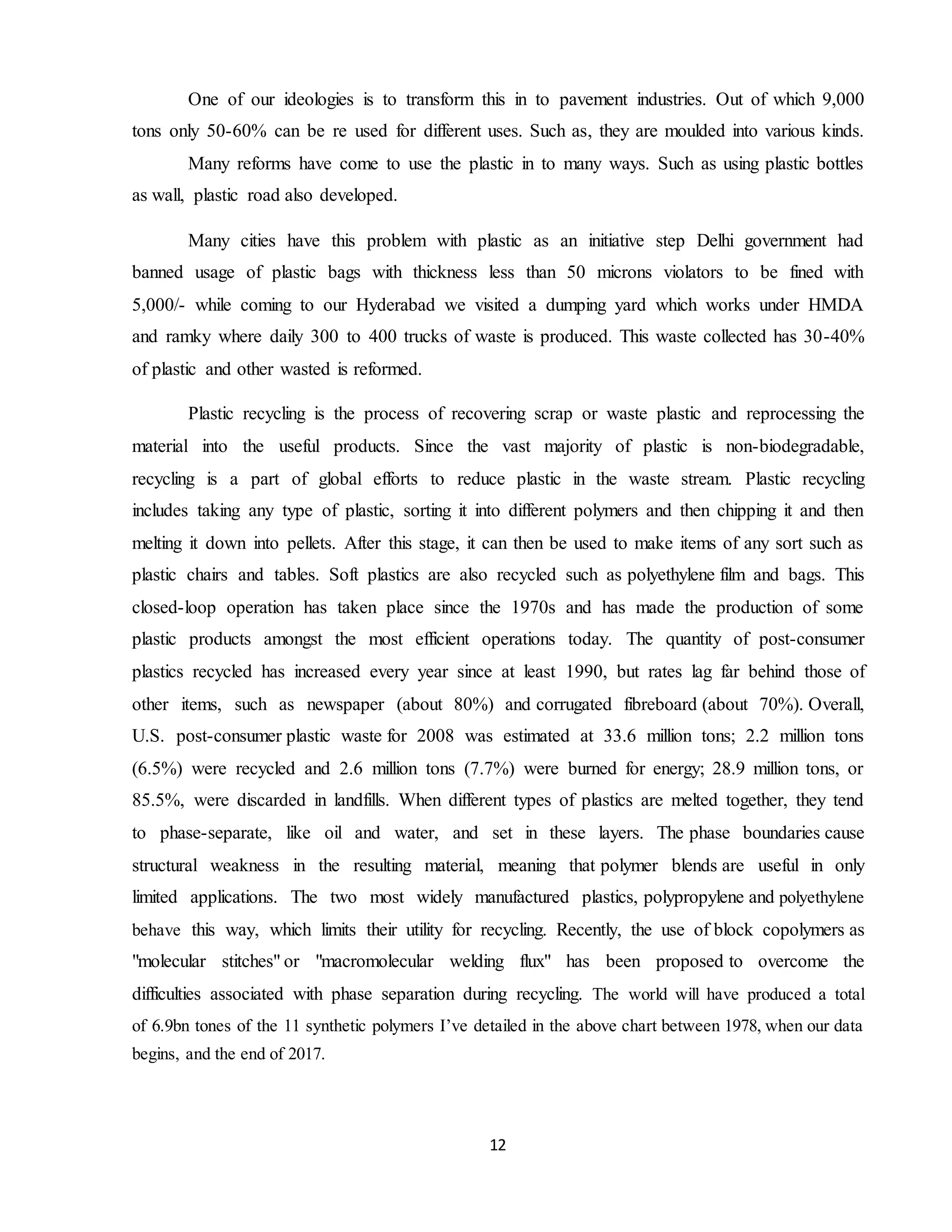
![13
Using the assumptions behind an important new study that was launched in July this year,
let’s assume that 76% of what has been produced ends up as plastic waste.
And again on the basis of the study – which was published in the peer-reviewed journal
science advance – let’s estimate that 79% of this waste ends up in landfills or the natural
environment (the remainder of the waste would be incinerated or recycled). That would amount
to eye-watering 4.2bn tones of the production of just these 11 polymers. As plastics take some
400 years to biodegrade, this 4.2bn tones is still hanging around.
“If current production and waste management trends continue, roughly 12,000m tones
[12BN] of [all] plastic waste will be in landfills or in the natural environment by 2050,” write the
authors of the study. One of the study’s authors adds: “We weren’t aware of the implications for
plastic ending up in our environment until it was already there. Now we have a situation where
we have to come from behind to catch up.”We are in effect carrying out an experiment with our
eco-system, the final results of which are completely unknown to us. What, for example, will be
the effect on fish populations and on human health as fish ingest more and more of our plastic
rubbish? Another very worrying forecast is that by 2050 there will be more plastic in our oceans
than seas than fish, according to the World Economic Forum.
But this is exactly the same as the debate over whether or not human activity is
responsible for climate change. Some people in our industry are saying, “We don’t have the data
to prove man-made global warming”, or even, “Look at this data I’ve found – it proves that the
scientific consensus is wrong. Climate change has nothing to do with carbon dioxide and other
‘greenhouse gas’ emissions”. In countering the views of the climate-change consensus, these
same industry executives also point to all the good things that the oil, gas and petrochemicals
industries have undoubtedly done for humanity.](https://image.slidesharecdn.com/utilizationofplasticsinflexiblepavements-190519102405/75/Utilization-of-plastics-in-flexible-pavements-17-2048.jpg)
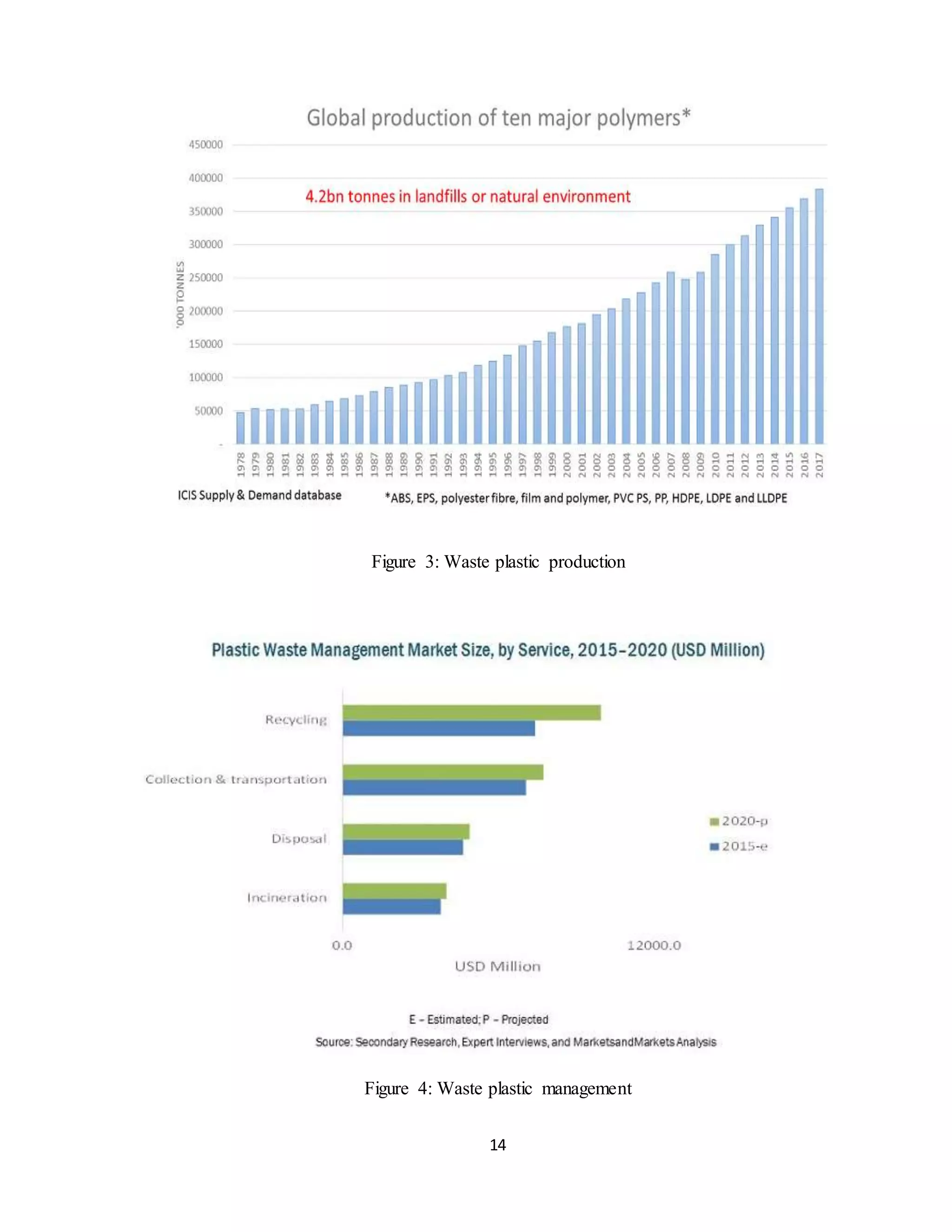

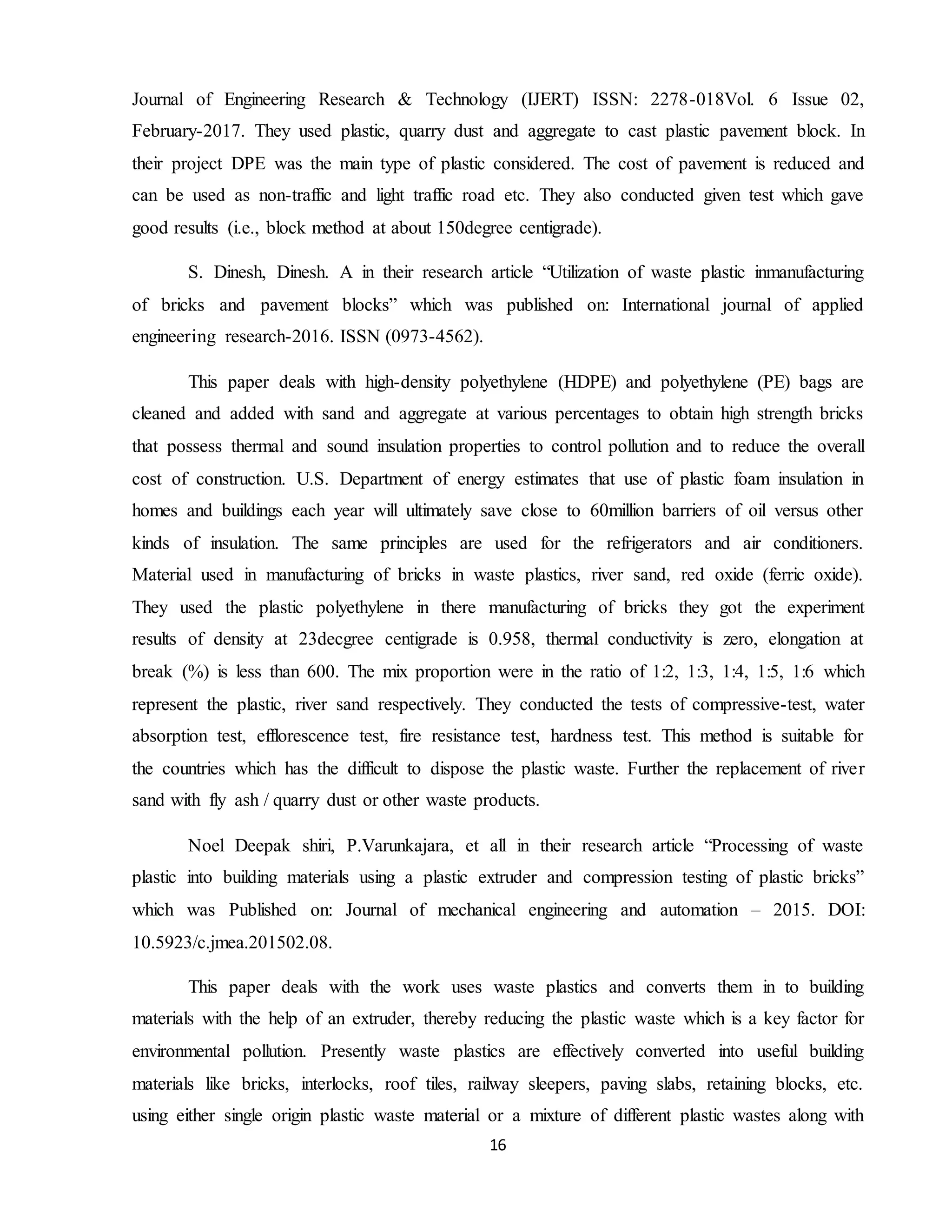
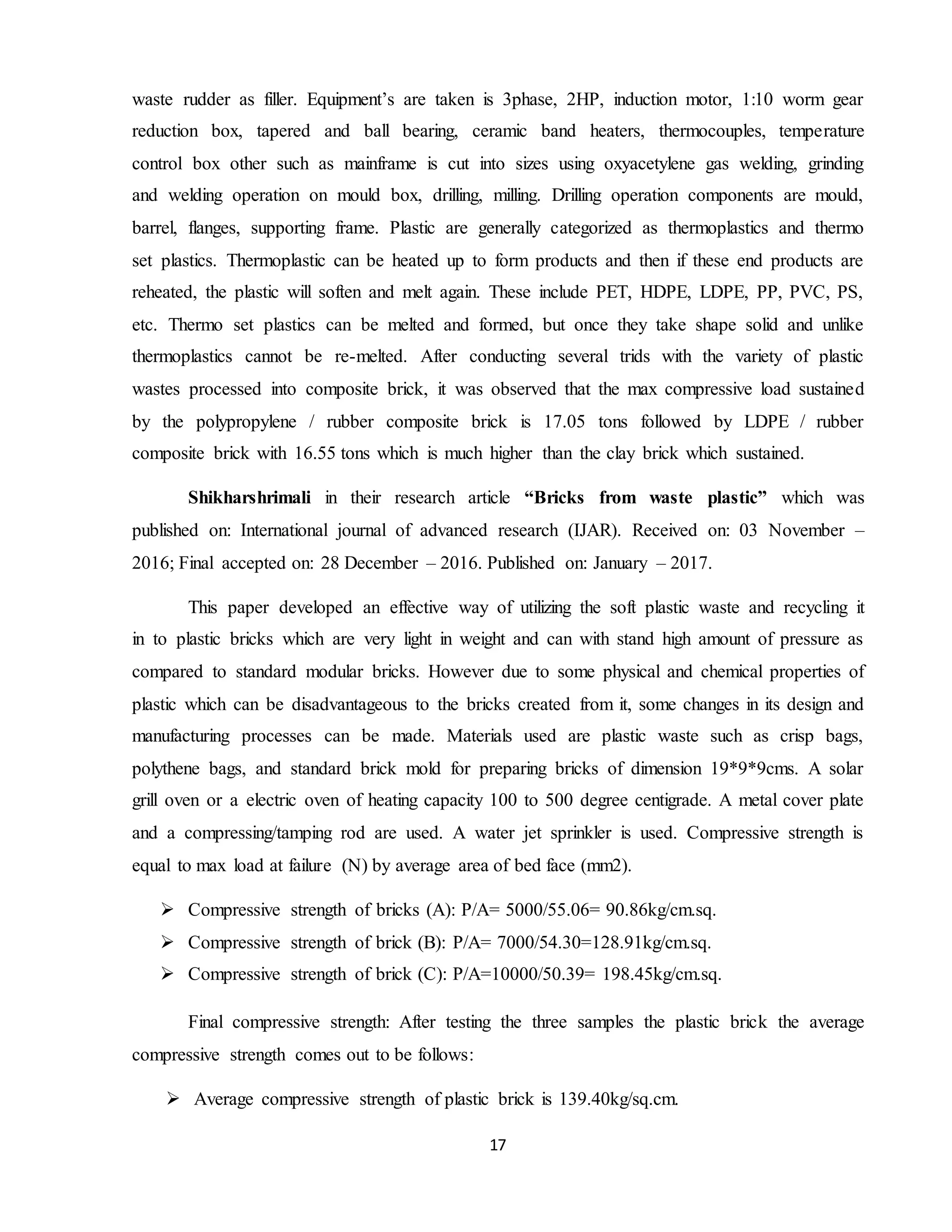
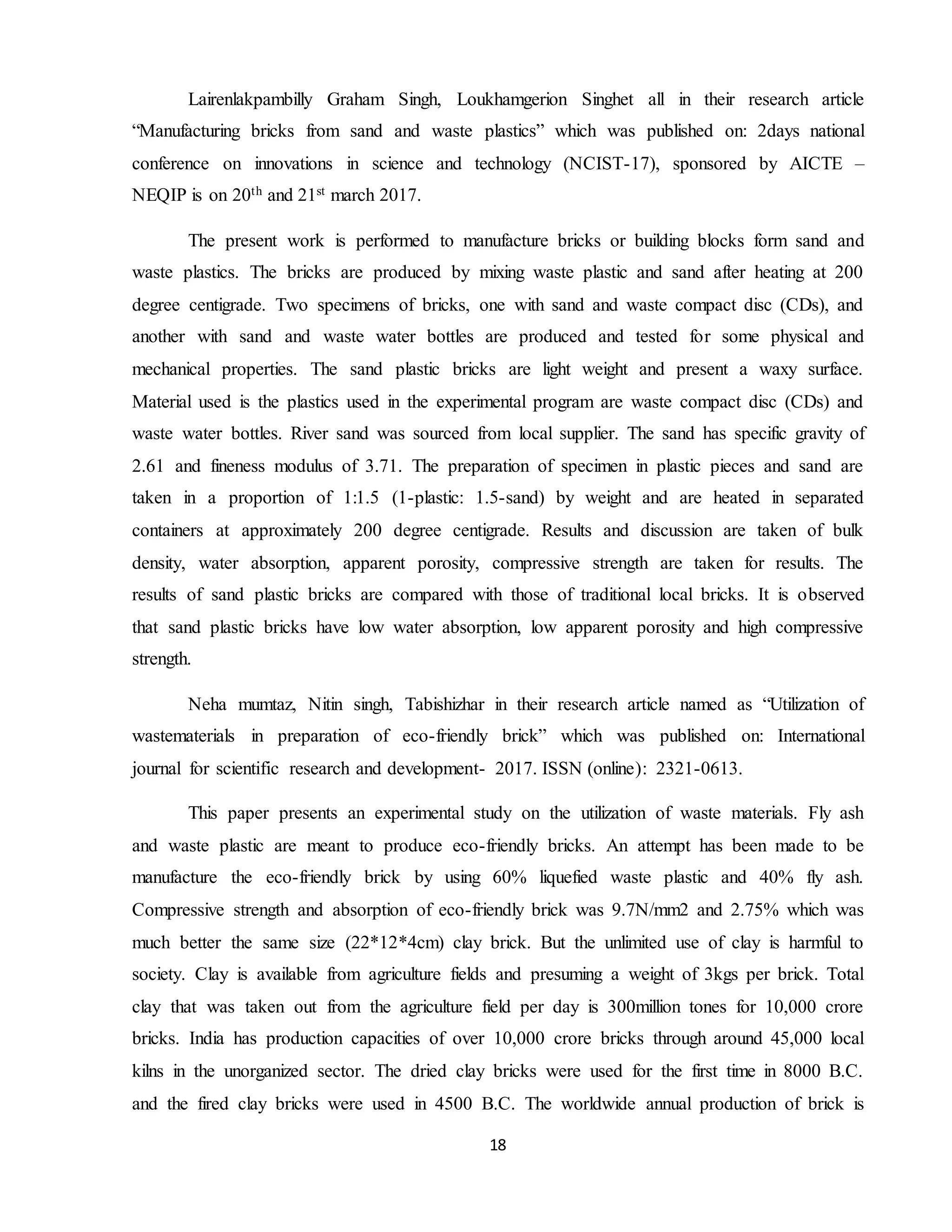
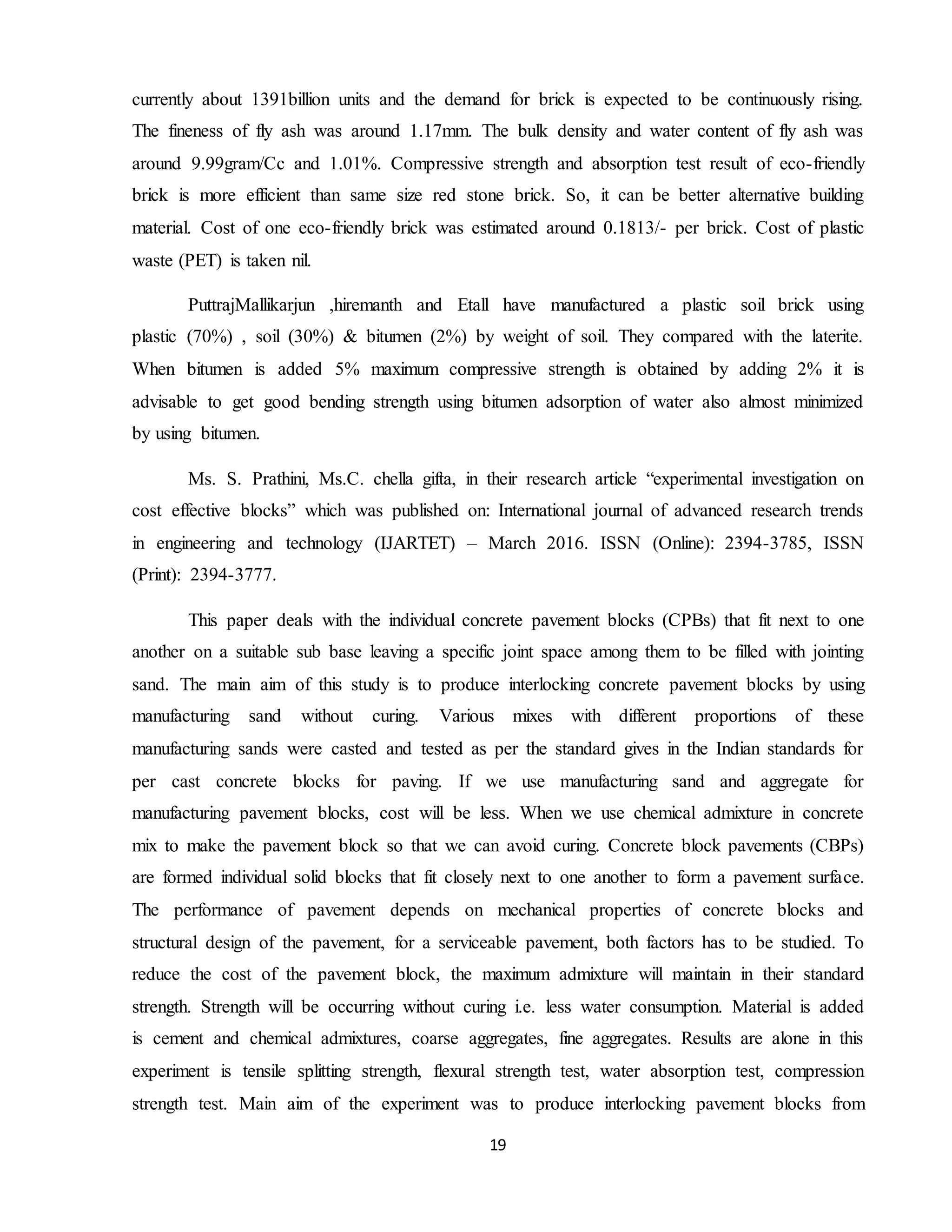
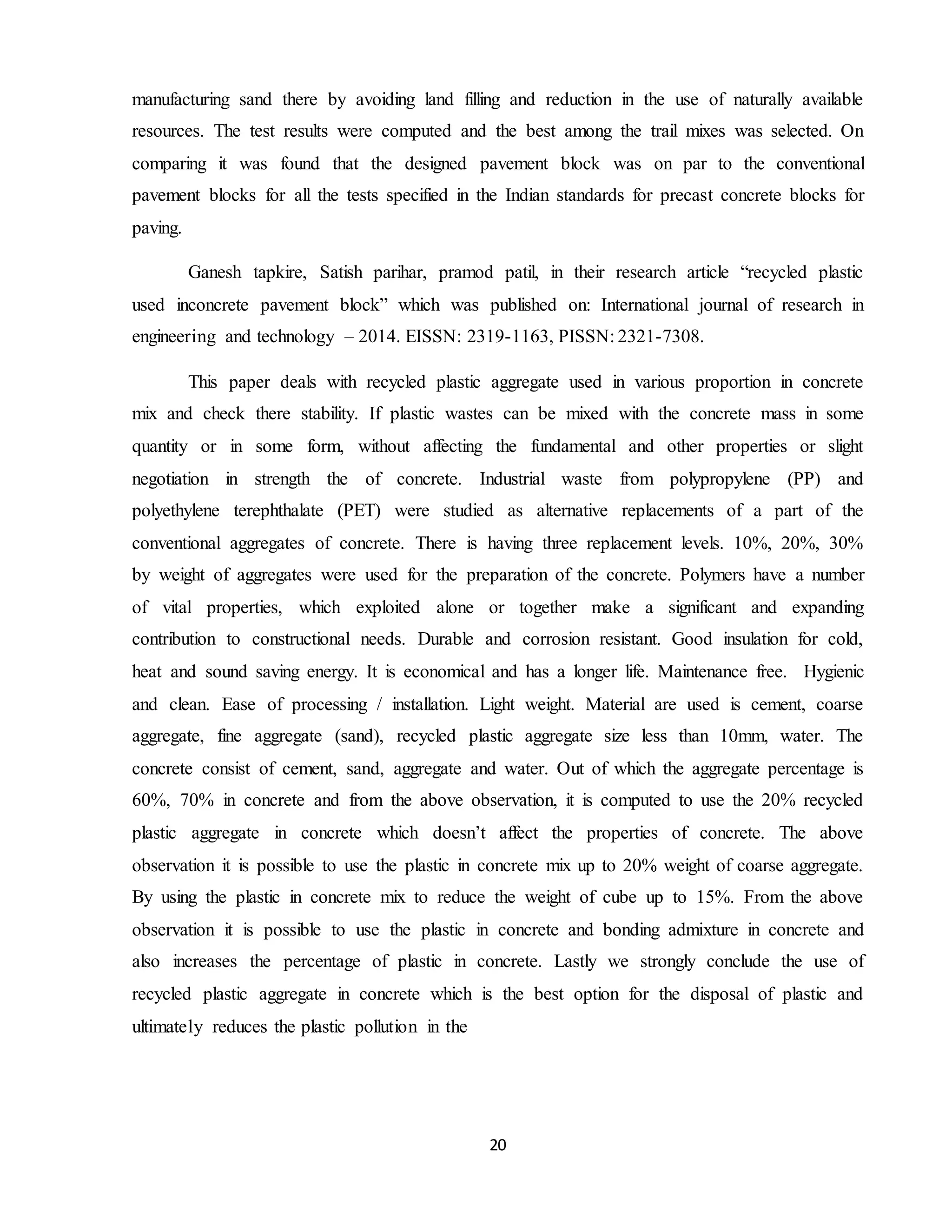

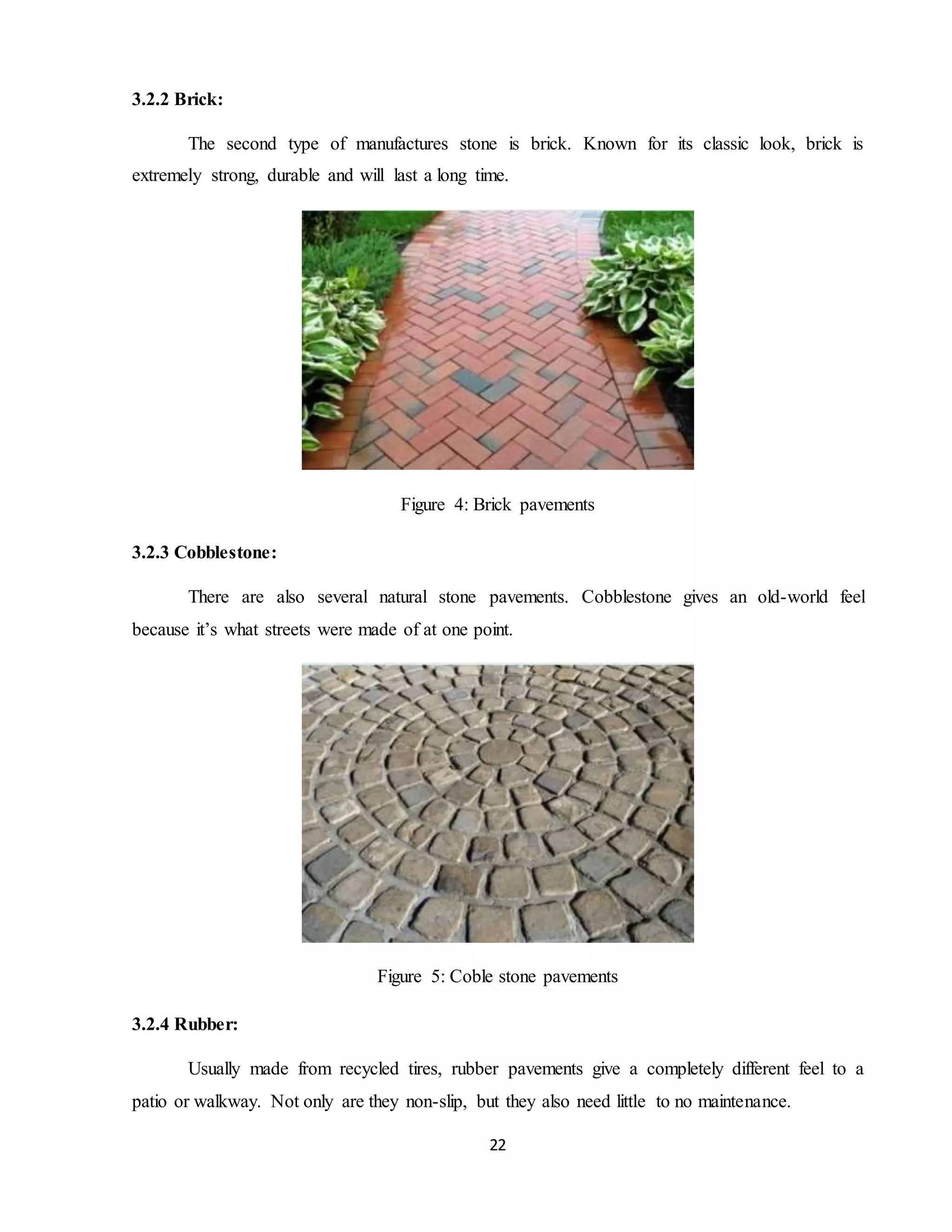
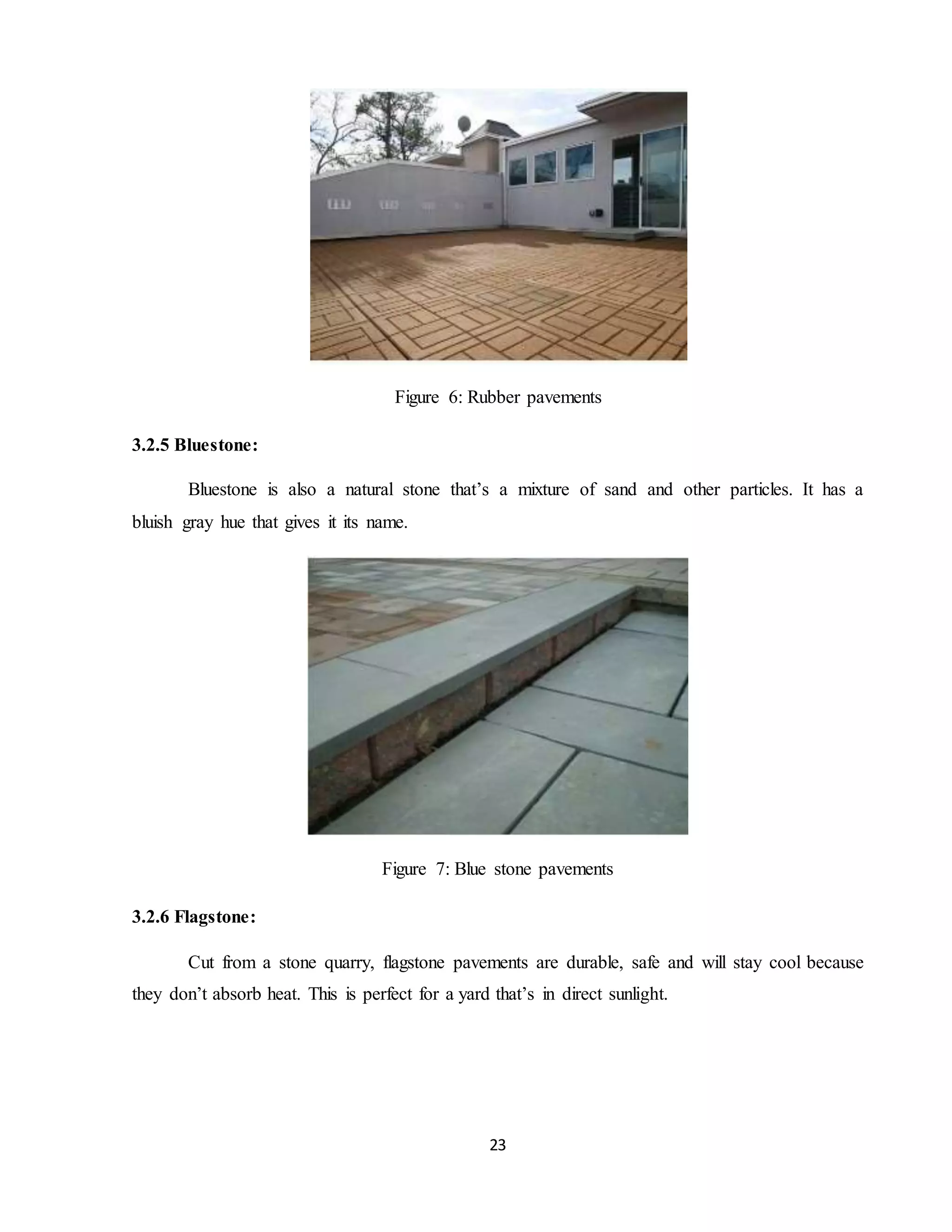
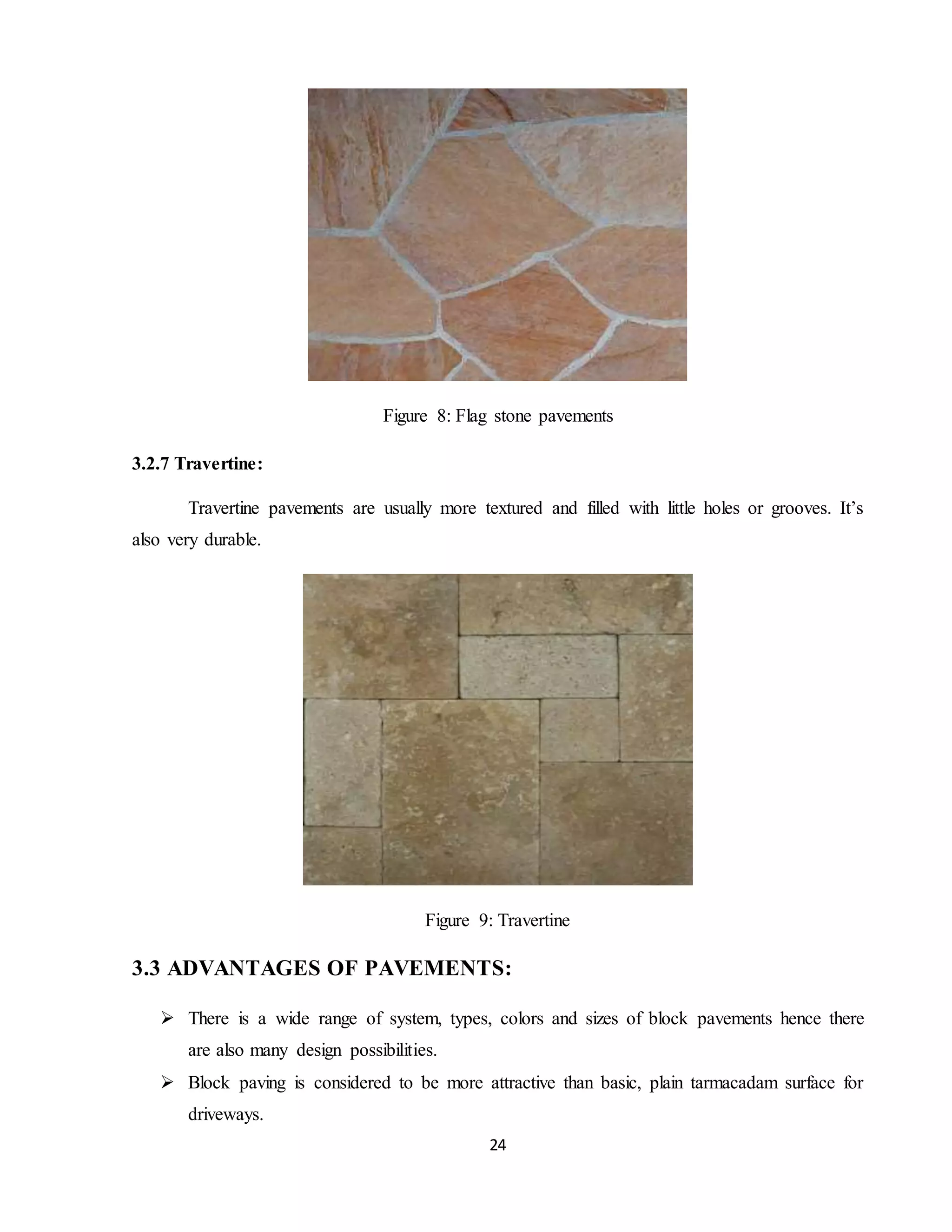



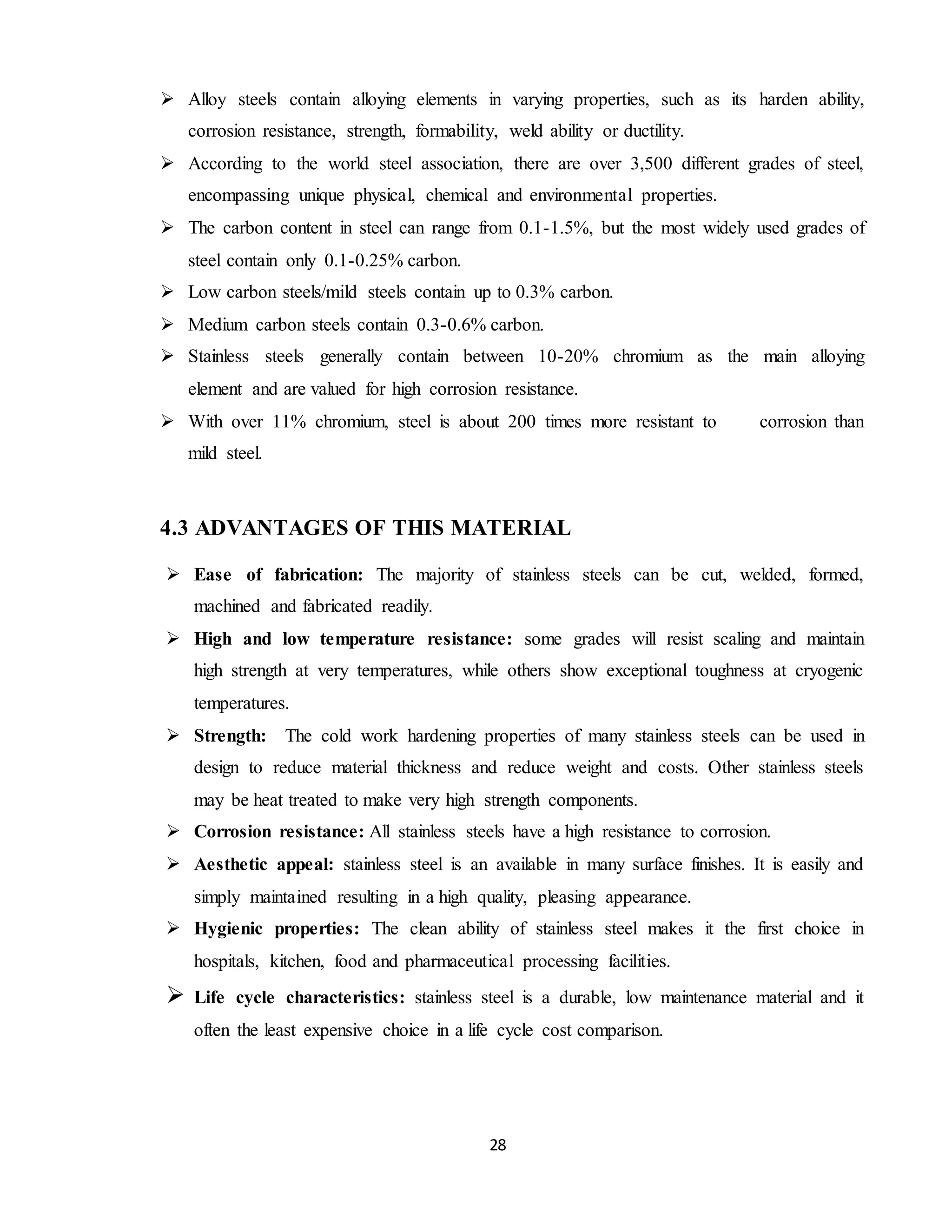

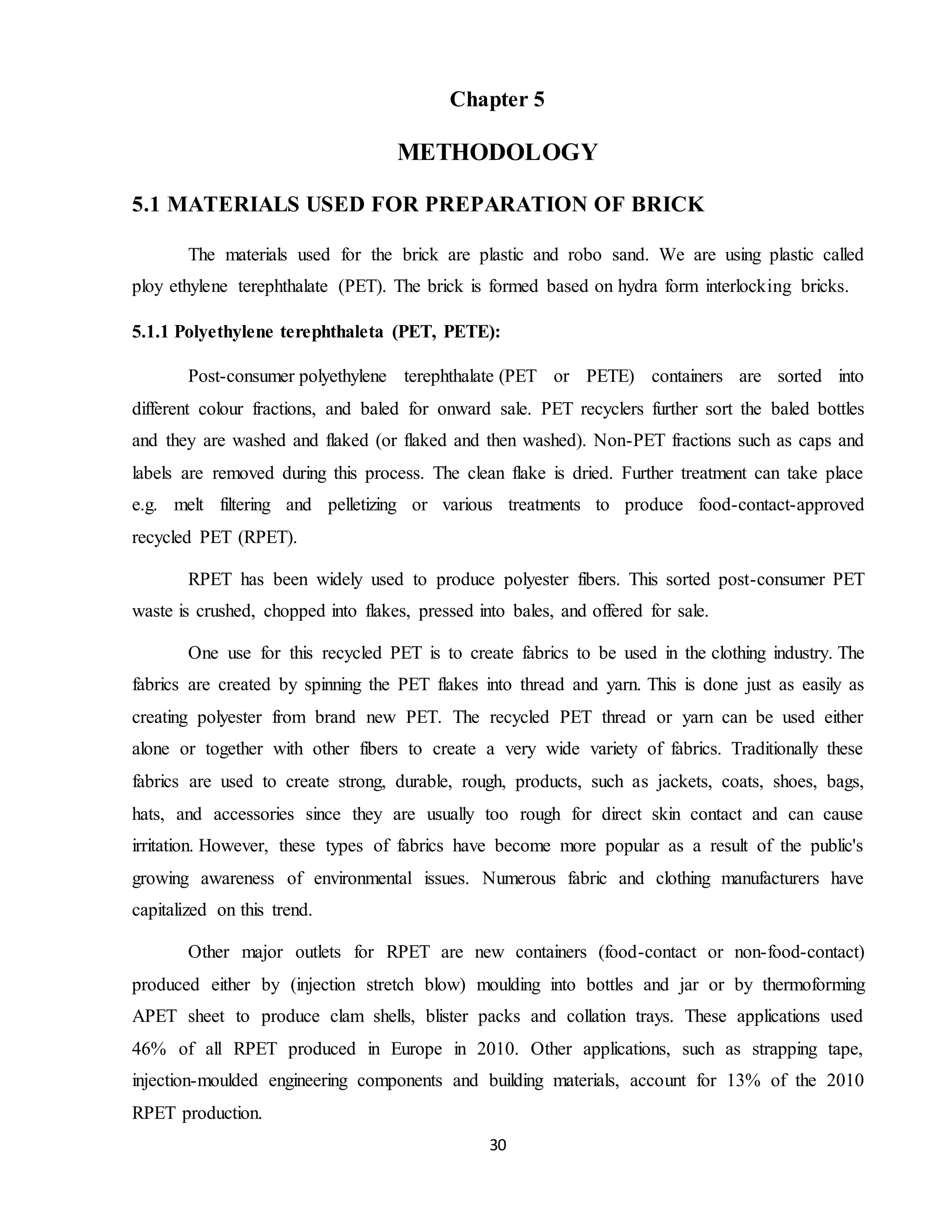
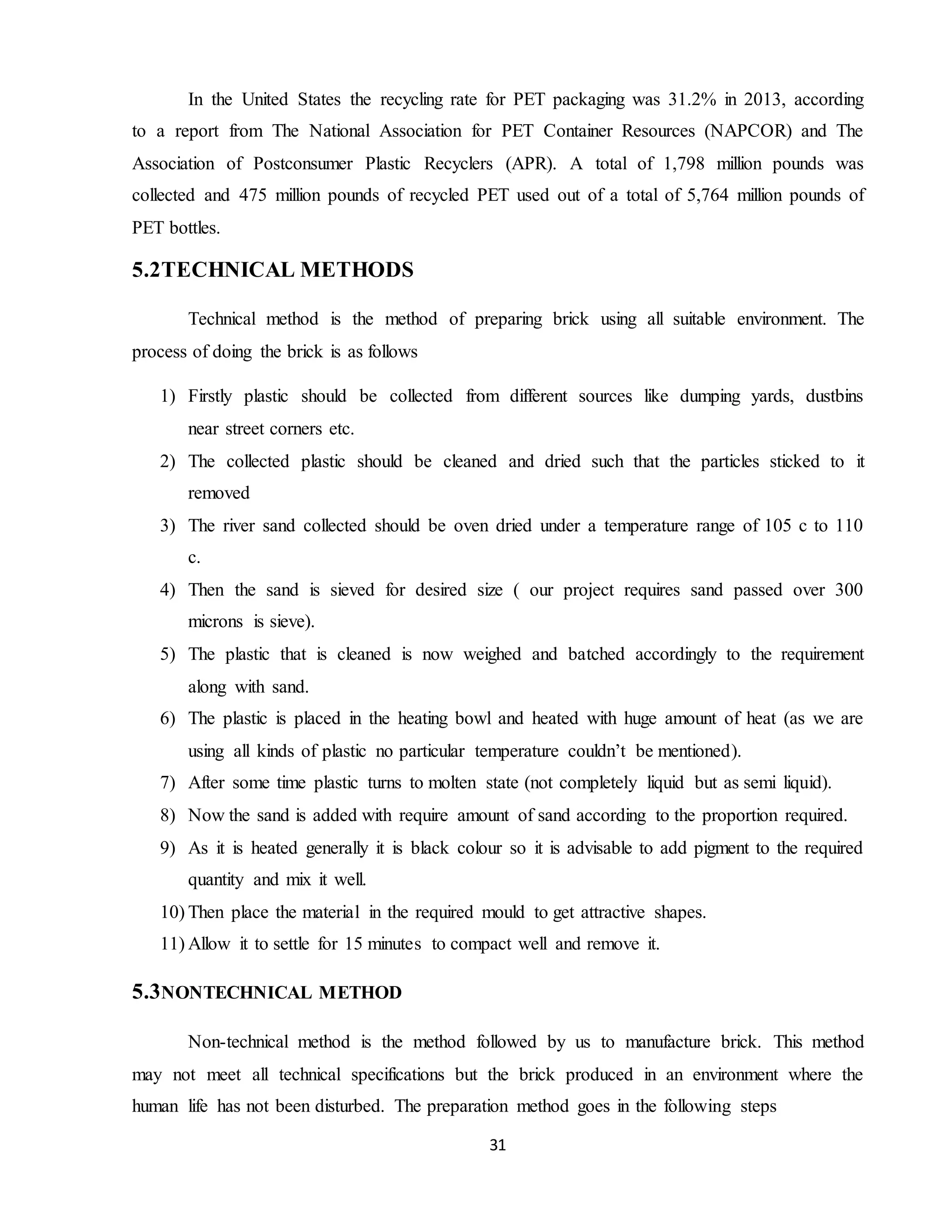

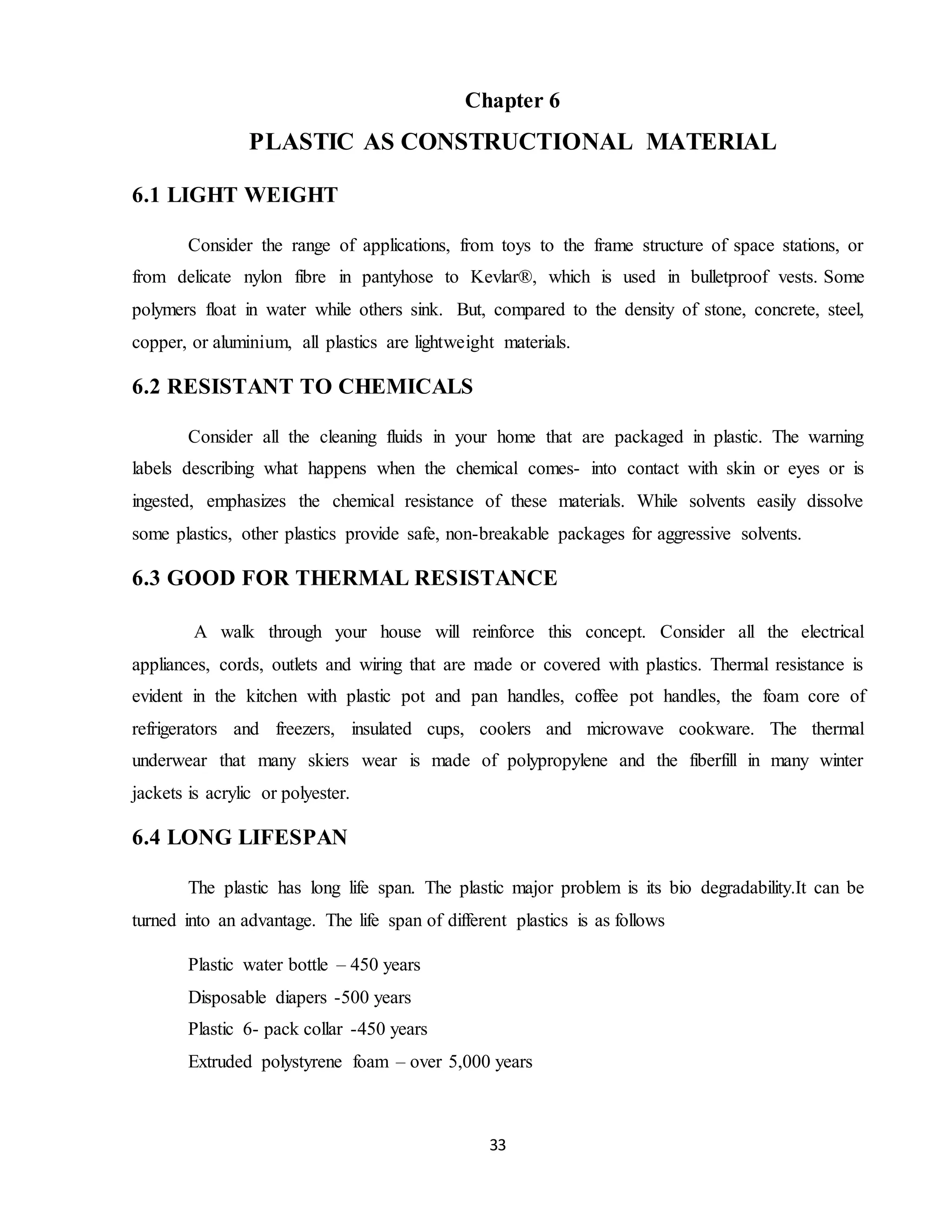
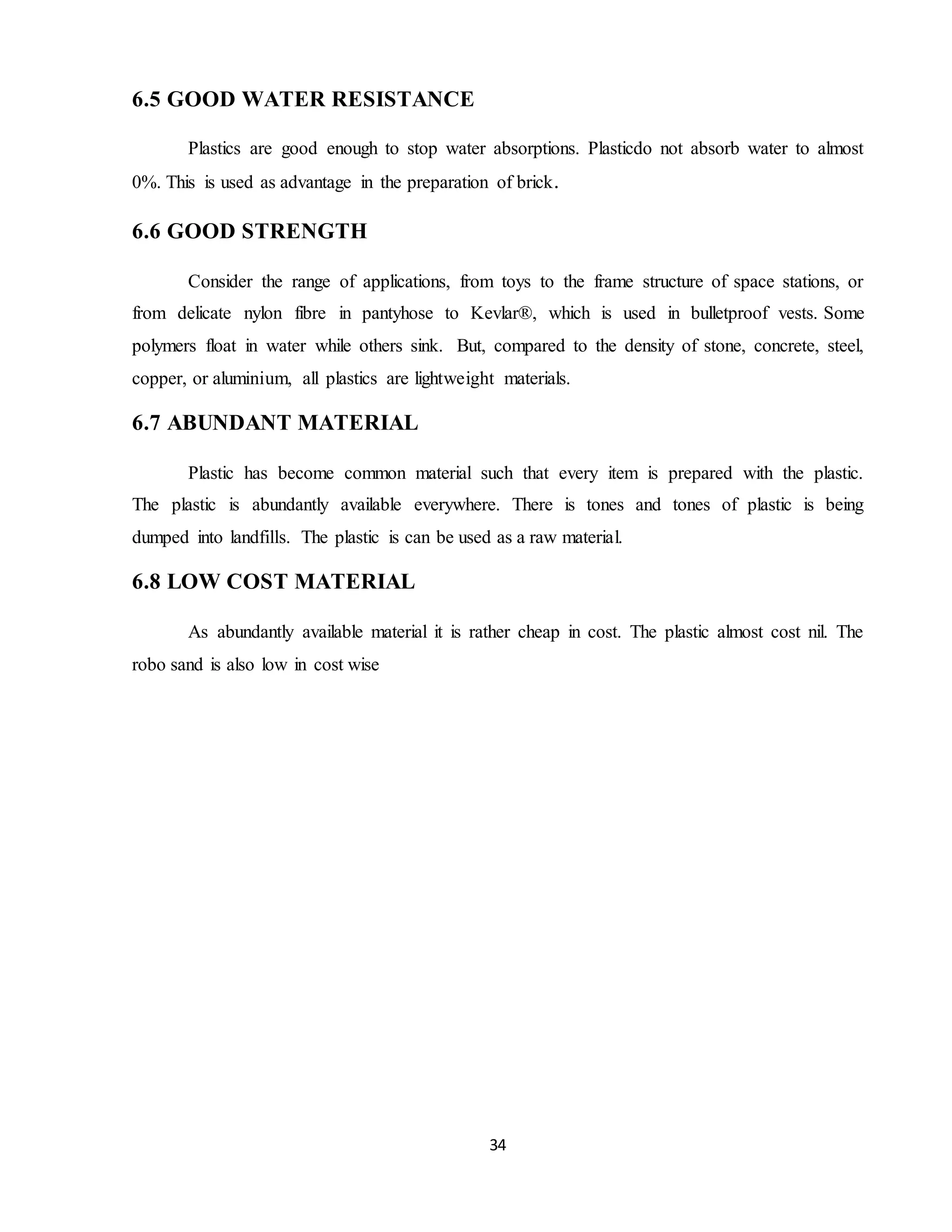
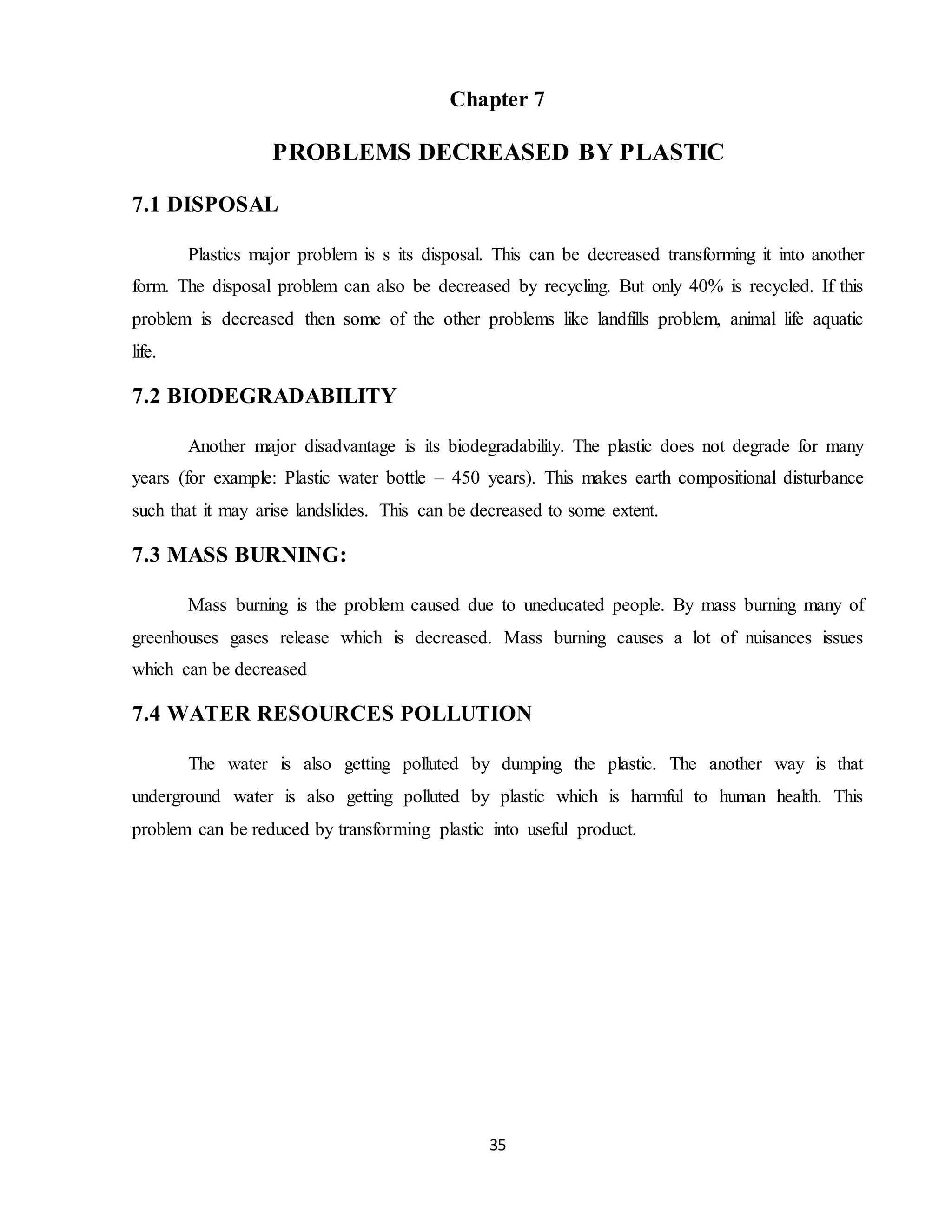
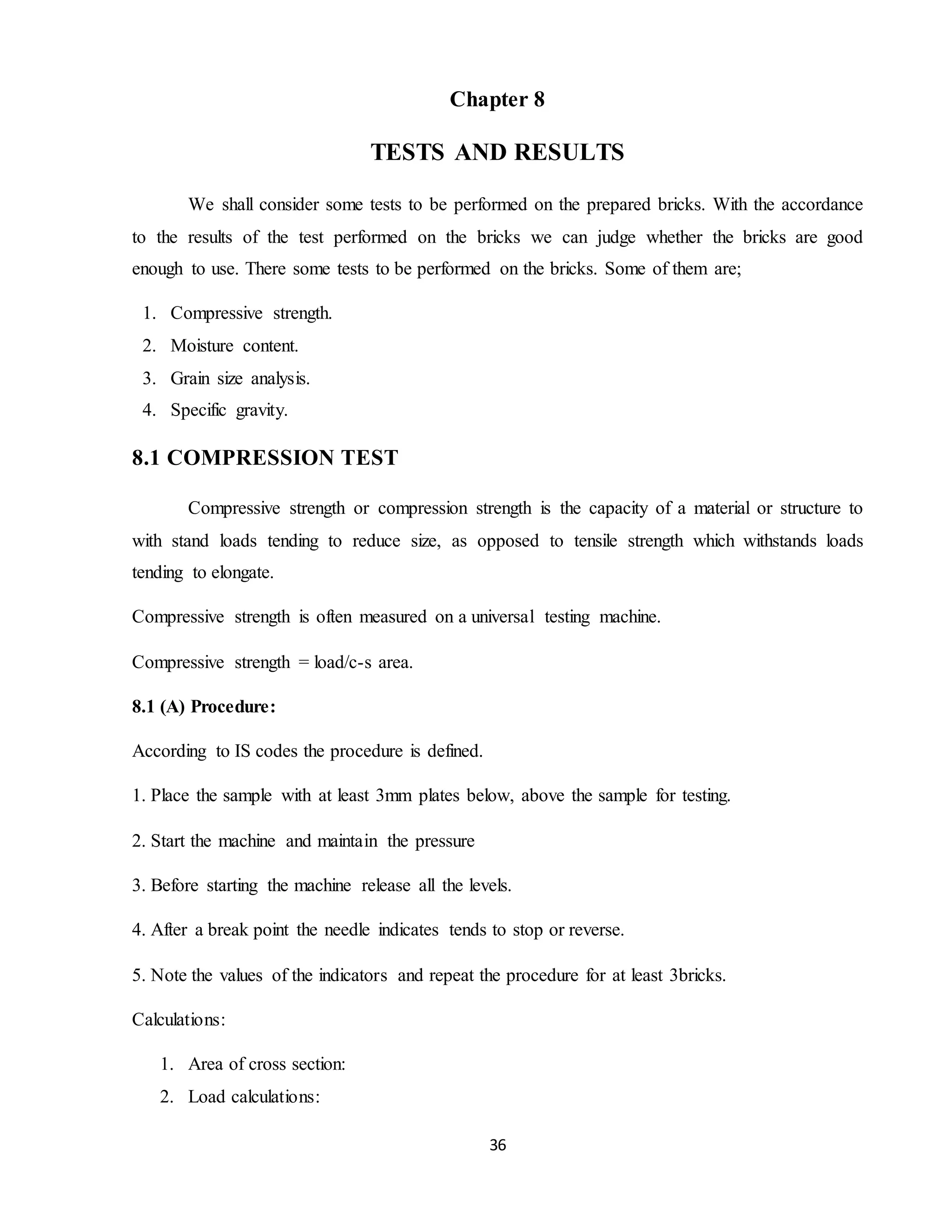
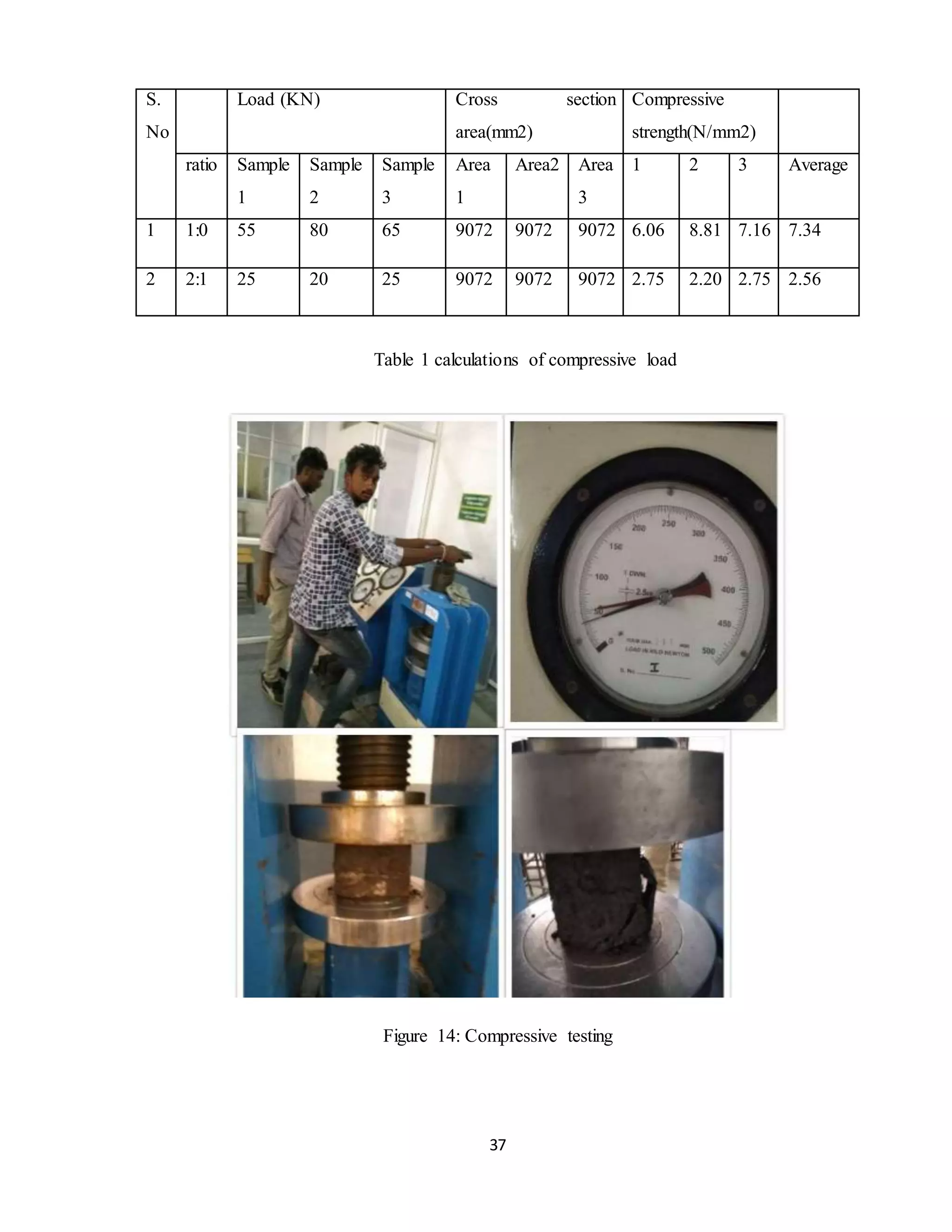

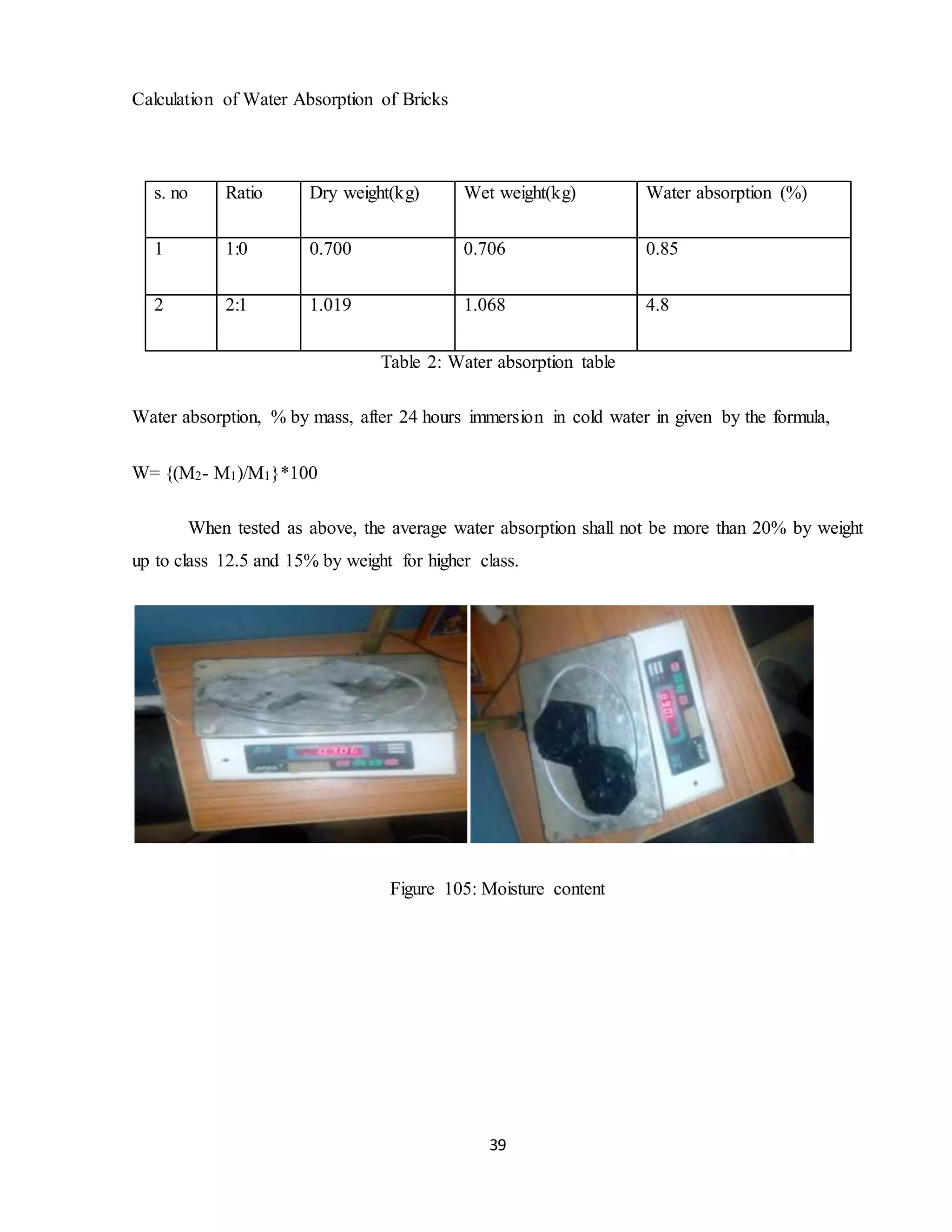
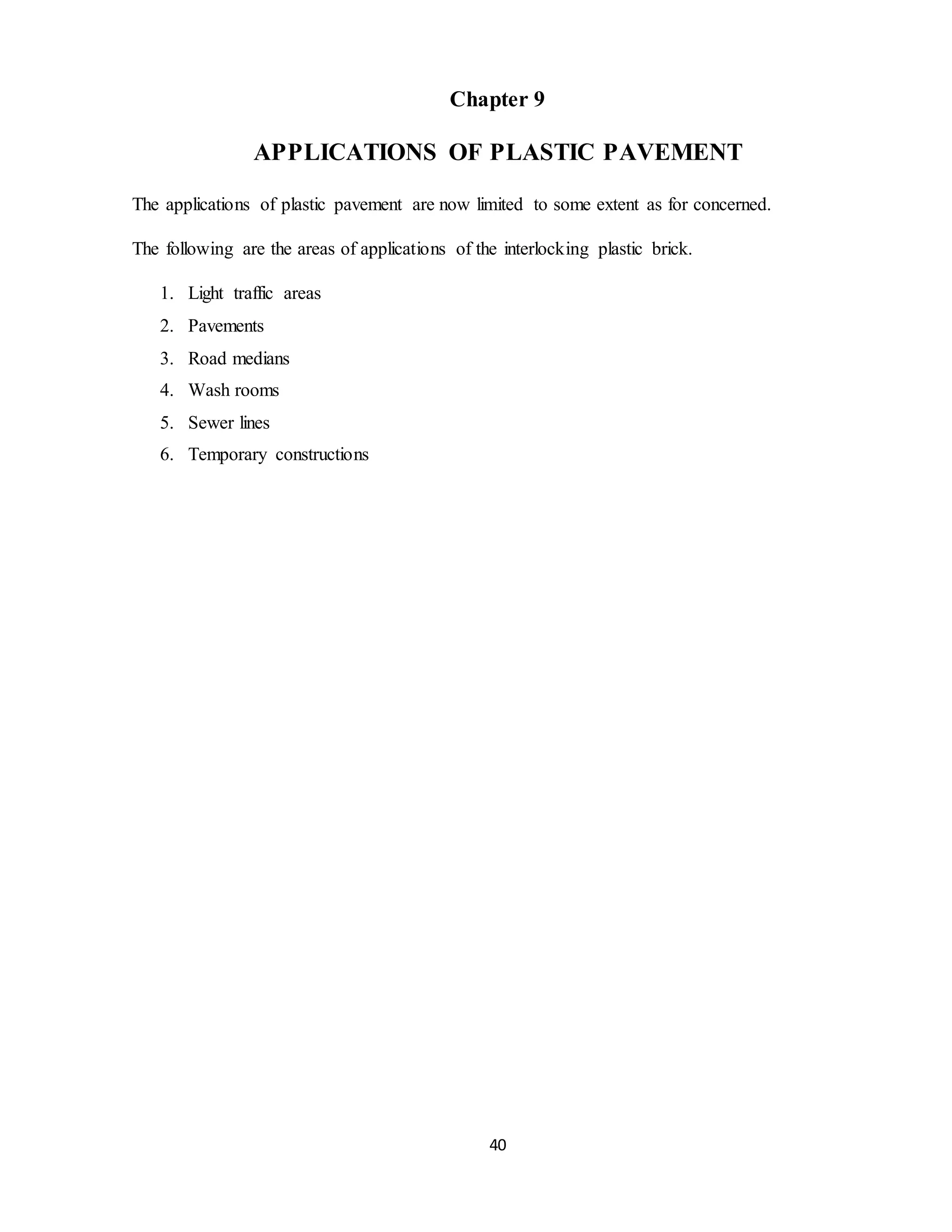
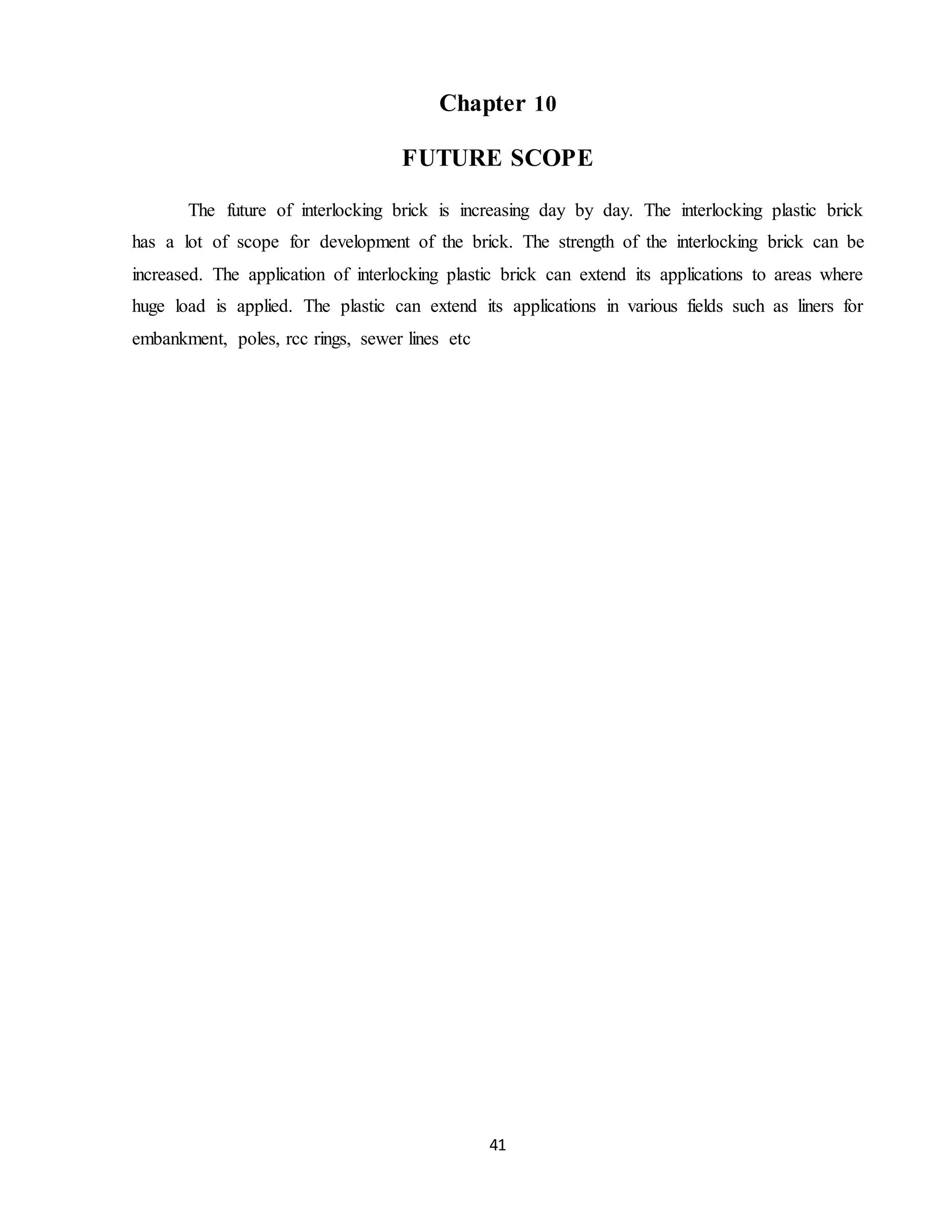

![43
REFERENCES
1. Vasudevan, R. et al. (2012). A technique to dispose waste plastics in an ecofriendly way -
Application in construction of flexible pavements. Construction and Building Materials,
28(1), pp.311–320. [Online]. Available from:
http://dx.doi.org/10.1016/j.conbuildmat.2011.08.031.
2. S.S.Verma,(2008),Roads from plastic waste, The Indian Concrete Journal ,pp.43-47
3. Kajal , N K S Pundhir , Sangita and A Chandra(2007), Use of waste plastics and copper
slag for low cost bituminous roads, Journal Of Scientific and Industrial
Research,Vol.66.pp.938-994
4. http://www.scribd.com/doc/51055725/use-of-plastic- waste-in-road-construction
5. http://nbmcw.com/articles/roads/930-use-of-waste-plastic-in-construction-of-flexible-
pavement.html
6. ISI, “Indian Standards Specifications for Roads Tar”, IS: 215, Indian standard Institution.
7. |Ministry of Road Transport and High Ways, Manual for construction and supervision of
Bituminous works, New Delhi, November 2001.
8. Sri Ram Institute for Industrial Research, Plastics Processing and Environmental Aspects,
New Delhi – 7.
9. Ossa, A., García, J.L. and Botero E, E. (2016). Use of recycled construction and
demolition waste (CDW) aggregates: a sustainable alternative for the pavement
construction industry. Journal of Cleaner Production, 135, pp.379–386. [Online].
Available from: http://www.sciencedirect.com/science/ article/pii/S095965261630765X.](https://image.slidesharecdn.com/utilizationofplasticsinflexiblepavements-190519102405/75/Utilization-of-plastics-in-flexible-pavements-47-2048.jpg)